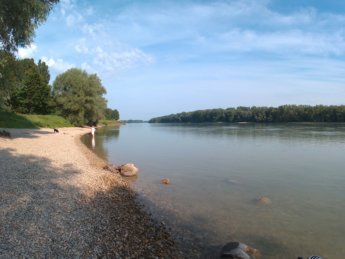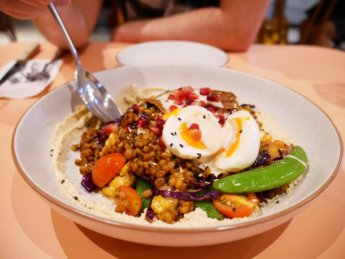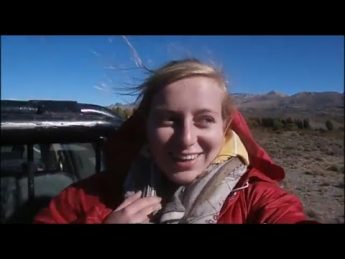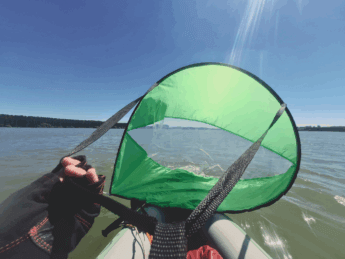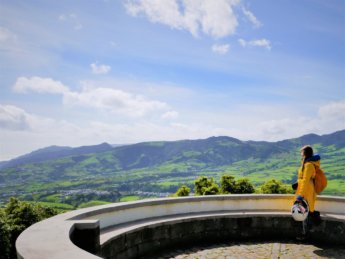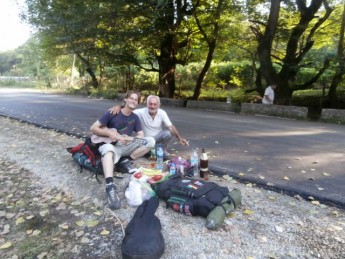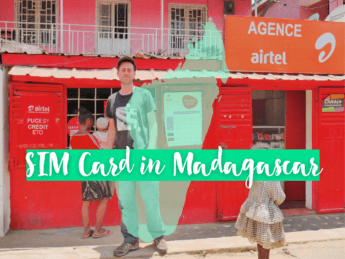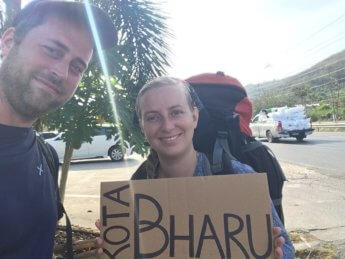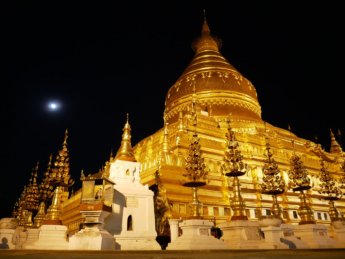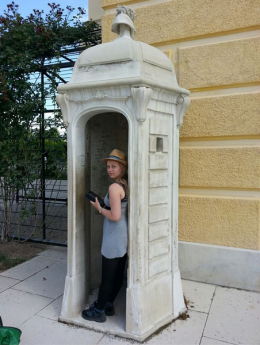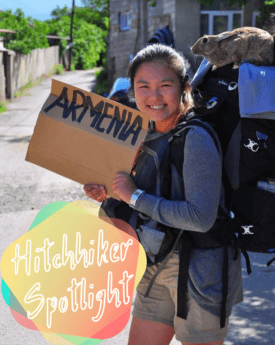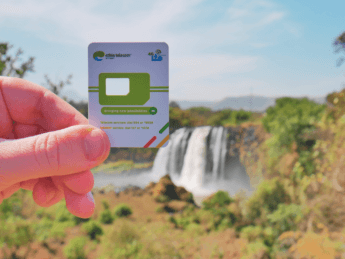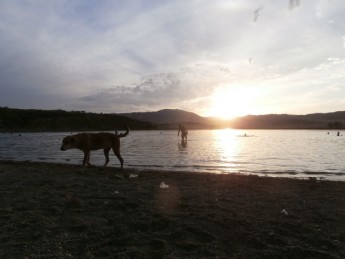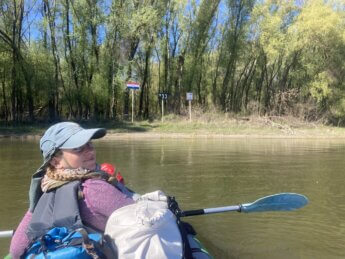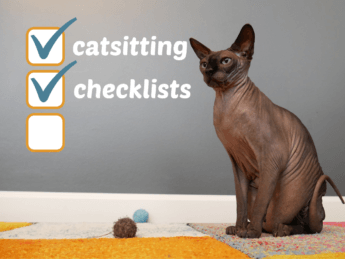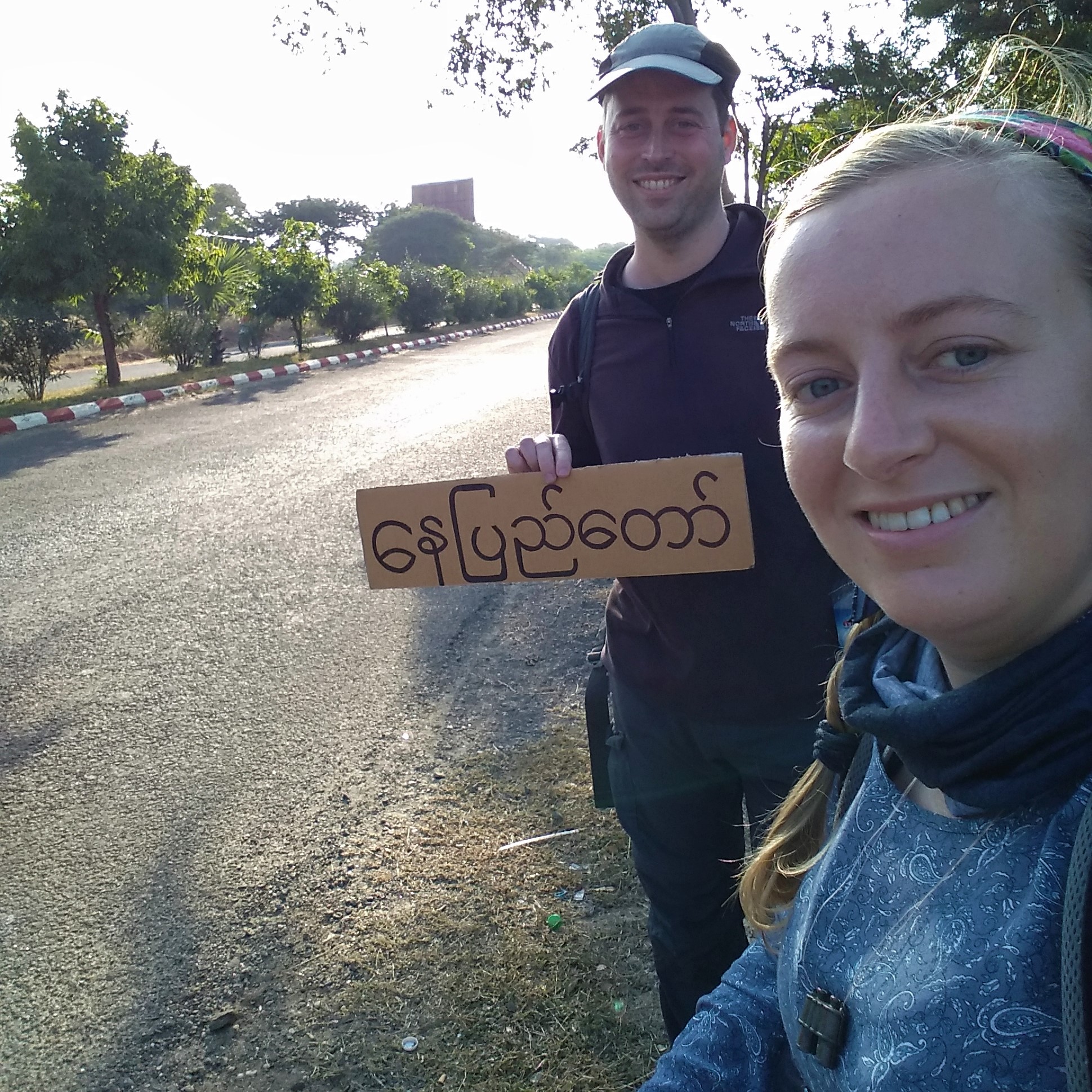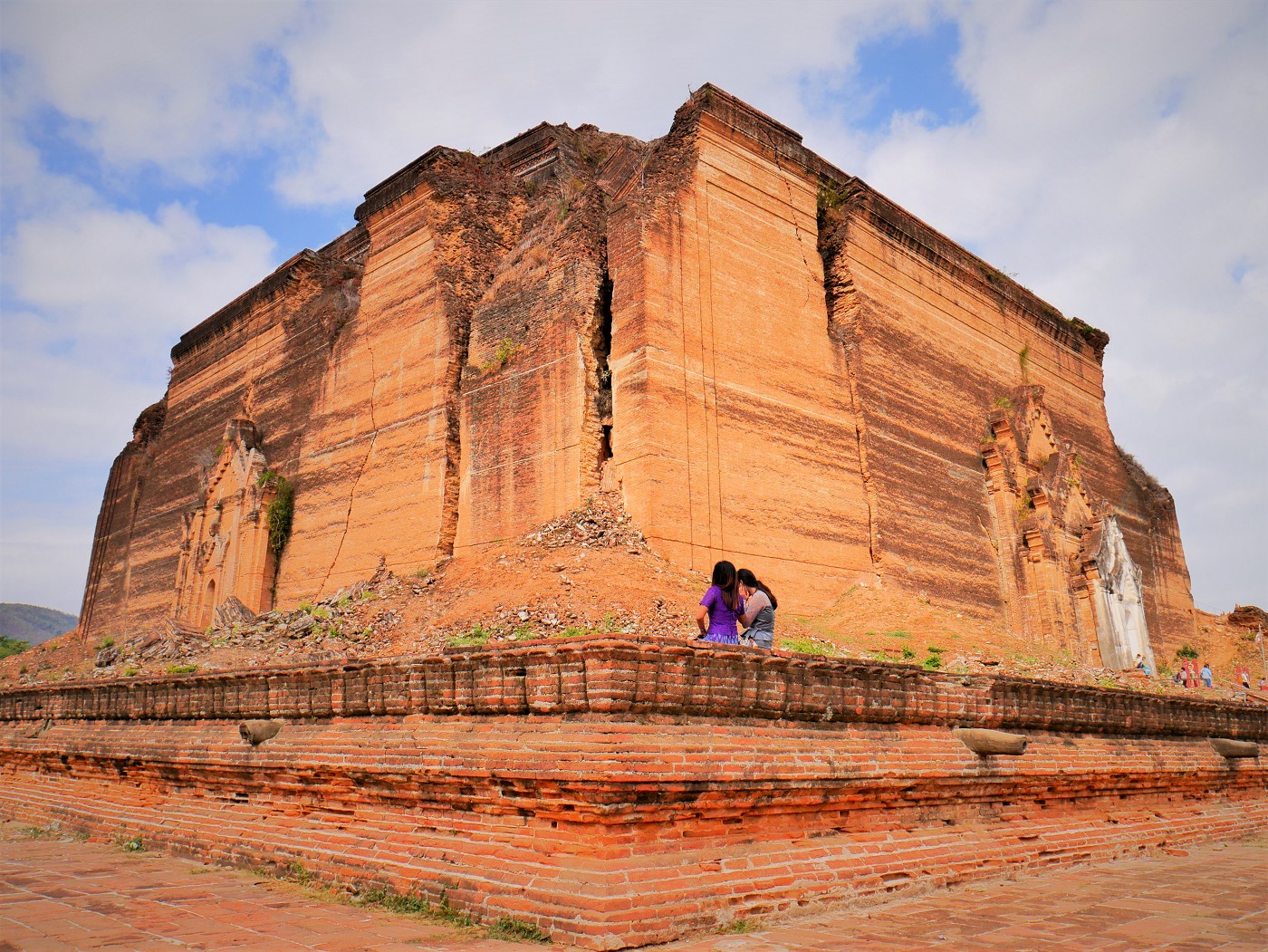We were in Naypyitaw from the 10th till the 14th of January 2020. We worked from our hotel, took a taxi, and rented a motorbike for one day of exploration.
Contents
- 1 A Brief History of Naypyitaw – a Planned City
- 2 Day 1: Orienting Ourselves
- 3 Day 2: Searching for Life
- 4 Day 3: Working from the Vegas Hotel
- 5 Day 4: Renting a Motorbike and Driving it About
- 6 Map of Naypyitaw Motorbike Trip, Prices, and Tips
- 7 Helpful Post? Consider Buying me a Tamarind Juice!
- 8 Thanks for Reading! Here are Some Pins:
A Brief History of Naypyitaw – a Planned City
What would you do if you could design a city from scratch?
You’d try to make it as perfect as possible, obviously. You’d try to think of everything. As someone who likes to play videogames with city planning features, I like to get things right for the sake of my sims.
Back in 2002, the military government of Myanmar had it with its densely populated capital city Yangon. Secretly, they decided to use an empty area between Yangon and Mandalay to build Naypyitaw from scratch. In 2006, they inaugurated the planned city and moved the official capital from Yangon to Naypyitaw. But the city wasn’t really finished yet after four years; they continued building.
In 2011, after elections, the military government was dissolved and Myanmar opened up ever so slightly. The regime change came with a lot of reforms, including those that make Myanmar easier to visit for foreigners. In 2012, they ‘finished’ building Naypyitaw—though as a visitor I must say that construction keeps going on well into January 2020.
The new government basically inherited a very large city that nobody really lived in. They stuck to the decisions made by the previous government, which still wields a lot of (military) power from behind the curtains. State counsellor Daw Aung San Suu Kyi encouraged foreign countries to move or open up their embassies in Naypyitaw in 2018. (Read on to see how that is going.)
Nay Pyi Taw translates to “the abode of kings” and I must say… they’re not wrong.
Day 1: Orienting Ourselves
Friday the 10th of January.
Naypyitaw’s Hotel Zone
As a foreign visitor, you’re required to pick one of the ~27 hotels in the designated Hotel Zone of Naypyitaw. There’s a variety of prices and facilities, but they all start at about €30 per night. We booked one at the Vegas Hotel for four nights.
There is so much capacity for guests at the hotels in Naypyitaw, but almost no visitors. This is because the city has organized several big-deal events in the past, such as the 2013 Southeast Asian Games, the 24th and the 25th ASEAN summits in 2014, and various business conferences. As long as you don’t visit Naypyitaw during a major event, chances are you’ll be the only guest in a hotel.
You won’t need to wait in line at the breakfast buffets, where the staff often outnumbers the guests. You’ll encounter amiable staff that’s just craving something to do to fight the boredom. So don’t fear that you’re bothering them; they’ll likely be happy something stimulating is finally happening.
One way that showed us that Naypyitaw is an optimistic city was at our hotel. Prominently perched between the reception and the elevators was a scale model of what the Vegas Hotel will eventually become, provided that the investments continue.

The ‘square’ outside the hotel will become a pool area connected by stairs from the large balcony. Behind the hotel (southwestward), they’ll open up a vibrant night market with all of Myanmar’s street food delicacies, but a sanitized version, evidently. There are little model puppets, tiny humans that are enjoying the shit out of the Vegas Hotel and by extension Naypyitaw.
As of now, the night market is a mostly plot of land occasionally grazed by long-horned cows. A few bunkhouses for the hotel staff bleach in the burning sun. And the Vegas Square is a well-maintained lawn overshadowed by a large telecom tower. Myanmar might brim with optimism, but this might just be a pipe dream.
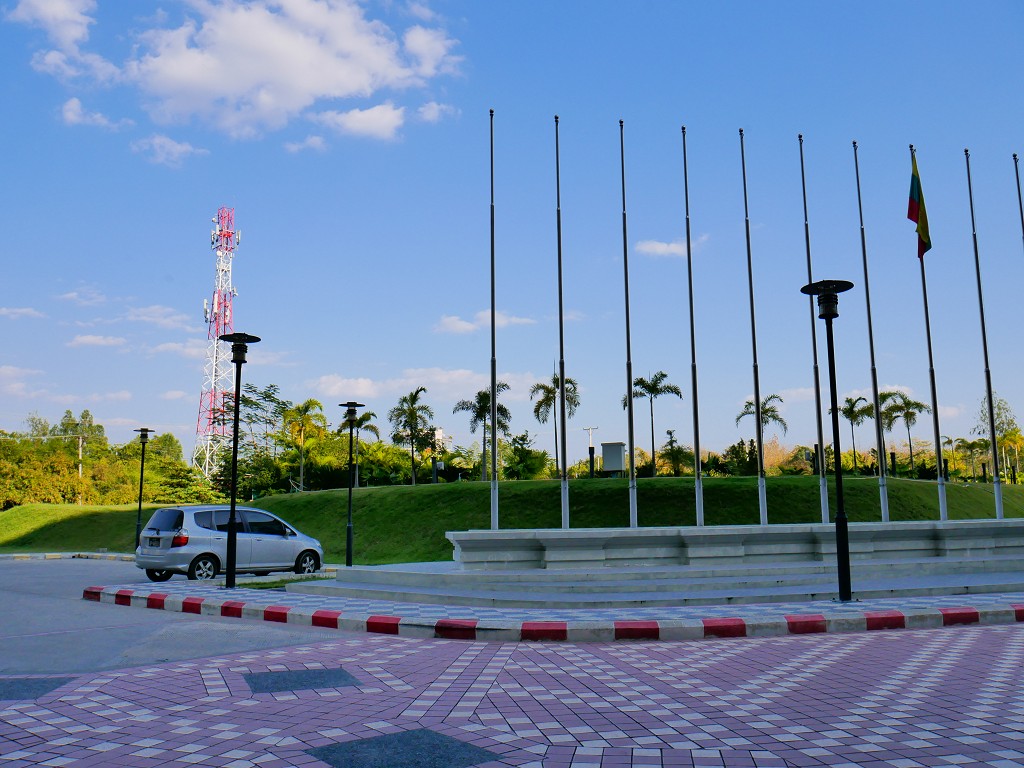
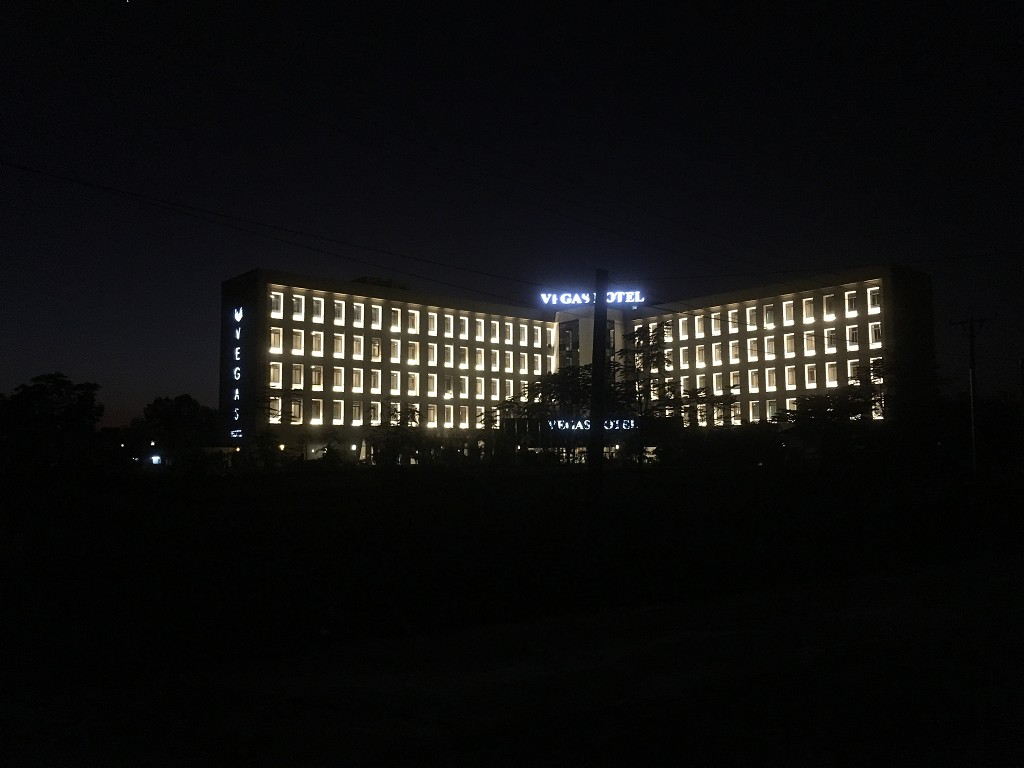
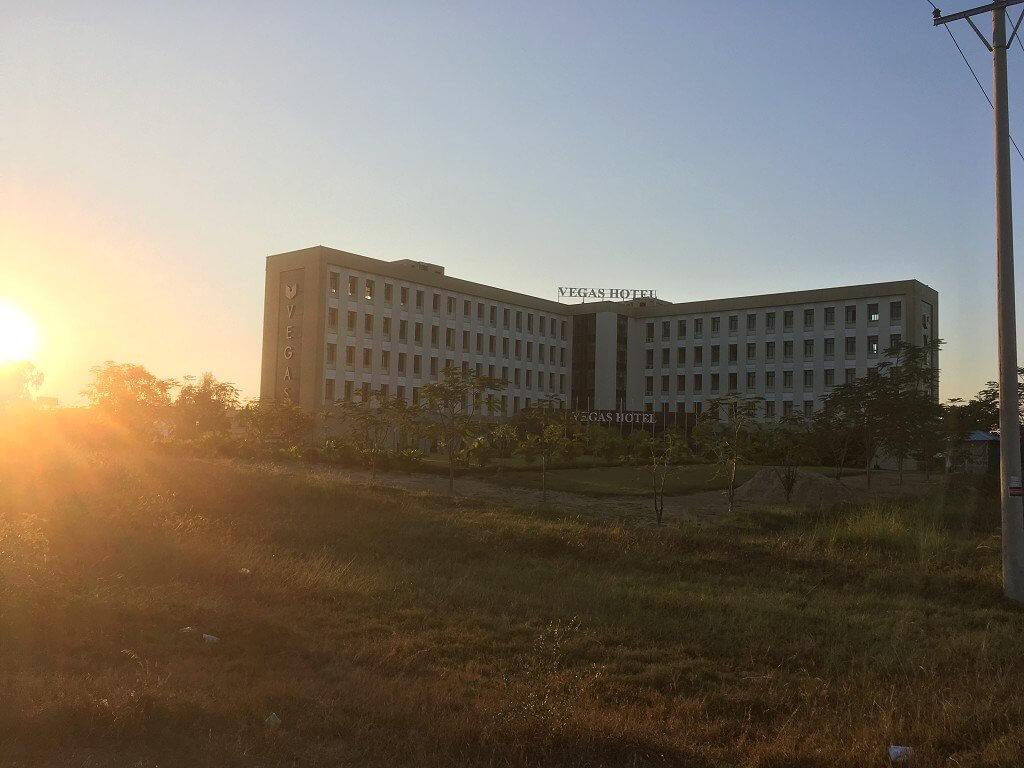
A Lesson in Walkability
After hitchhiking from Nyaung-U (Old Bagan) to Naypyitaw, we checked into our room at the Vegas Hotel. When we went out to eat, we already noticed the incredible missed opportunity by the urban planners: there are no sidewalks and no street lights.
Our 500-meter walk from the hotel to ‘The Rich Dining Restaurant’ took us on a stumbling hike through stabby bushes and rival packs of dogs. Luckily, the food was so delectable that we’d forgotten the pain of the journey to get there through the ill-defined desire paths.
The return trip through the darkness by torchlight was even more momentous; the sounds of barking, breaking, and the subsequent smack of metal and plastic on the concrete road, human groans, and canine yelps told us there had just been a crash. We hurried across the road and used our flashlights to stop traffic around the two young guys who were in pain but doing okay.
Mysteriously, we were not even the first ones to arrive at the scene—an old man in longyi appeared out of nowhere after we crossed the road. We waved at traffic with our flashlights, and another motorcyclist stopped and parked his bike in a way that lit up the scene for all traffic to come. The old man and the motorcyclist helped them up, and Jonas asked if they were okay. One of the casualties shook Jonas’ hand before driving off into the darkness again with his moaning buddy.
I heard a dog cry in the distance.
Back at the hotel, we prepared to make a visit to the other parts of Naypyitaw. This short hike apprised us that it was going to be pretty difficult to navigate this city without a vehicle.
Day 2: Searching for Life
Saturday the 11th of January.
Naypyitaw City Hall
The next day after working for a half-day, Jonas and I went downstairs to ask the receptionists to arrange a taxi for us. They were happy to do so and asked us where we wanted to go. All while pointing at the map, I said to City Hall, and then to the Thapyagone night market. She quoted a price of 8.000 MMK.
Our taxi came and we drove to City Hall without a problem. I knew that taking photos of buildings here would be suspicious at best and criminal at worst. When we arrived, there were three guards relaxing in the shadow and I knew it would probably be a no. I took a photo outside the gate, painted in the Myanma tricolor before closing the door.

The uniformed men were very happy to see us, but also wary about the purpose of our visit. I asked if we can go in and approach the building, which was a solid 700 meters away from us. (I should have brought glasses.) That would be a no since we were there outside of operating hours. I made the shape of a roof with my hands and said I liked it, and if I could at least take a photo from here. That was okay and I thanked the guy with a chayzubaa.
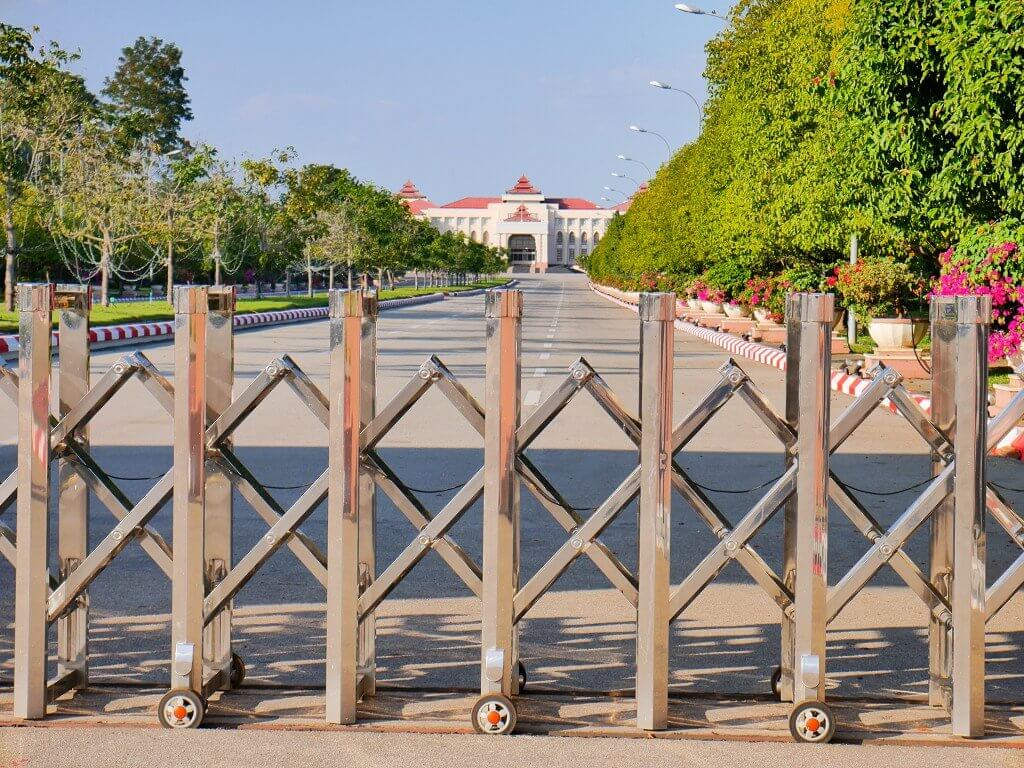
The guys were impressed with our knowledge of the Myanma language and asked if we knew more. So we said mingalaba. The enthusiasm increased and they started rattling off in Myanma. We exchanged some awkward “Haaa… no, we don’t speak more Myanma,” and then thanked them again and said bye. We got back into the taxi and continued on.
Eating at Thapyagone Night Market
Our taxi driver dropped us off at Thapyagone Night Market (သပြေကုန်းဈေး). We paid him and thanked him for the ride, then he left.
It was still the middle of the day, but there was a small market thing going on. There were many stalls selling mostly clothes outside the market building and lots of tiny shops inside the odd-shaped building. Comparing the real world to any map application is incredibly disorienting; almost none of it adds up.
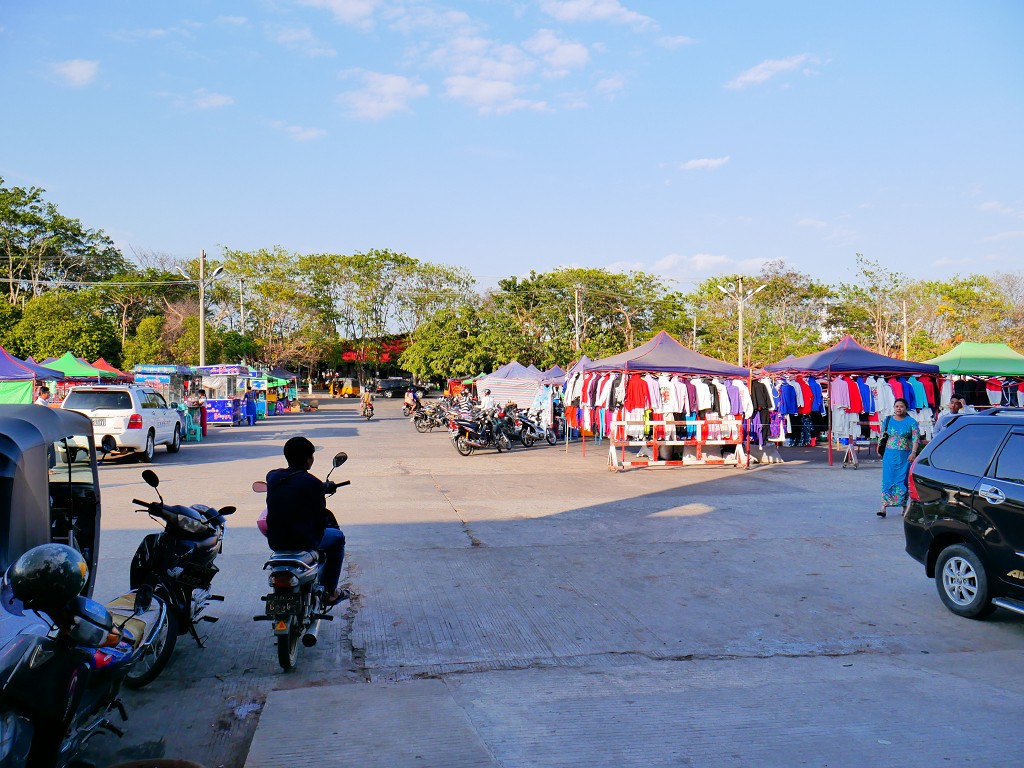
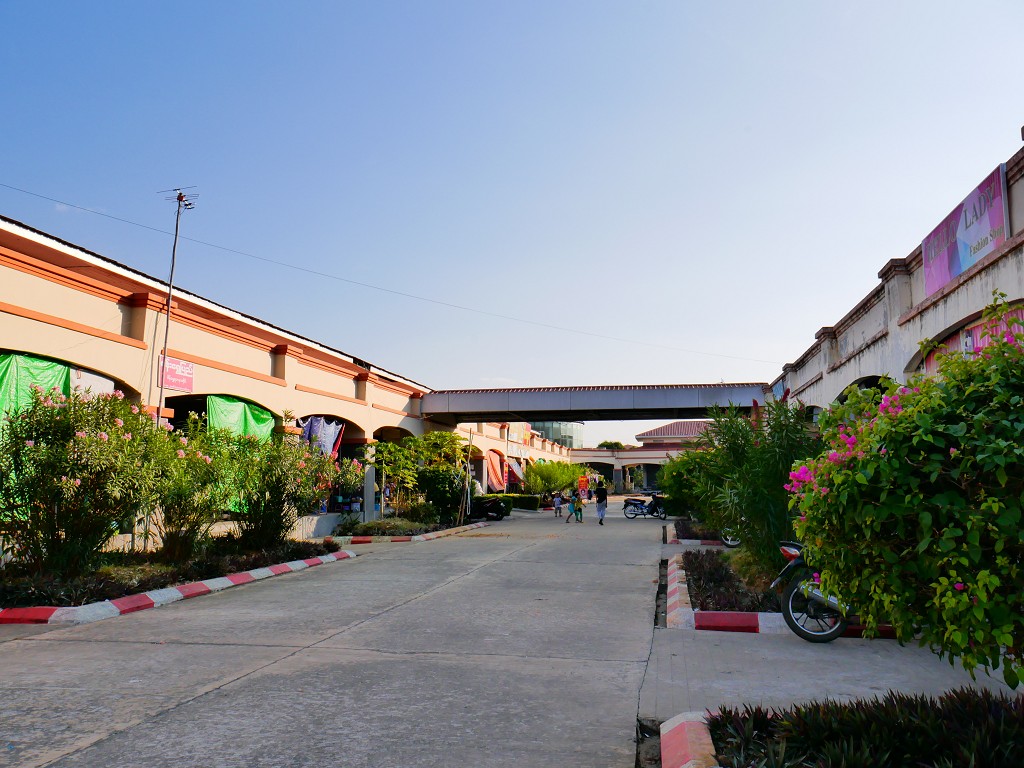
Our reason for going to the general area around Thapyagone market was that Google Maps showed the largest density of restaurants in that area. On the ground, there were still very few people out in the real world. The number of faces didn’t match the sheer size of the place. Unlike older articles I’d read about Naypyitaw that describe the city as a “ghost town”, it’s not void of people. There are just too few.
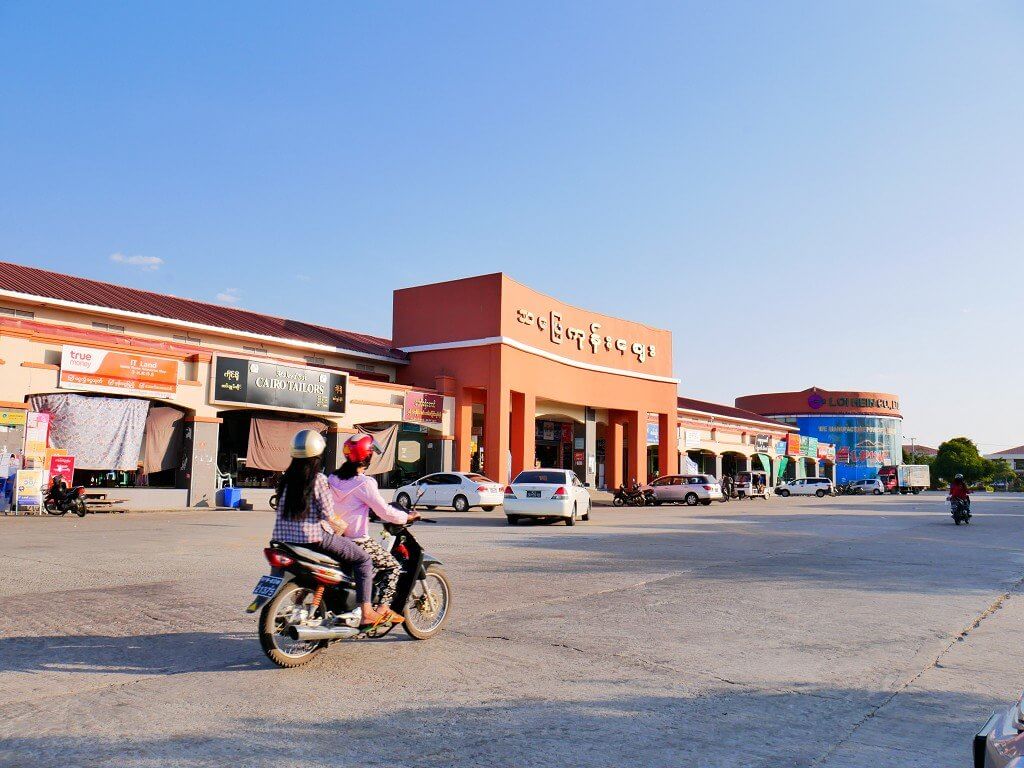
Anyway, the point of visiting the market was to find a shop to buy ourselves some bottled water for back at the hotel. But we didn’t want to lug around all that, so we first went to the promising restaurant hotspot on the map.
Again, walking around was just a struggle to find a path that made sense. There are these wide concrete-paved empty spaces, a speedbump here and there, followed by a completely unwalkable stretch that’s blocked by a wide flood canal. Someone who walks here a lot has apparently had it because they put a wooden plank over the canal to cross the abyss. Once again: pedestrians overcoming the limitations given by urban planners.
Once we arrived at the restaurant area, there are a few more souls. We first make a stop at Excellent Tea House to get Jonas some Shan noodles (meeshay) and for me an egg and cheese roti with condensed milk. There’s free tea on the table. We still don’t really have a clue how to order the right quantity of food in Myanmar, but we’re learning a lot from each iteration. After the noodle and pancake, we’re not full yet. I crave a beer, so we decide to patronize another business here that does beer and beer snacks.
Having walked counterclockwise, we arrive at a business called ‘Top Mountain Flower Beer Station’. It’s Chinese-owned and we sit down to enjoy some Myanmar beers with free dried peas to snack on. Jonas decides it’s time for more food, so we order something again. The food is alright, but not as good as we had at The Rich Dining Restaurant mentioned previously, so we don’t think we’ll go out of our way to eat here again.
We return to Thapyagone market around sunset. Despite all its flaws, this area is still the most sensibly-planned area of Naypyitaw we’ve seen so far. There are shophouses and people that live above the shops. There’s a community among the working-class humans that are trying to make a living from this top-down approach to urbanization and society.

Now that it’s not so hot, there are more people around. We visit several shops to get water and some snacks and then go to the tuk-tuk station. The young guy is happy to have a customer. We help him find our hotel on Google Maps and he effortlessly navigates us back to the Vegas Hotel for 3.000 MMK.
Day 3: Working from the Vegas Hotel
Sunday the 12th of January.
We literally just ate breakfast at the hotel, worked online, and then went out to eat at The Rich Dining Restaurant once again to live like kings. But we did preplan a bit of what to do on Day 4.
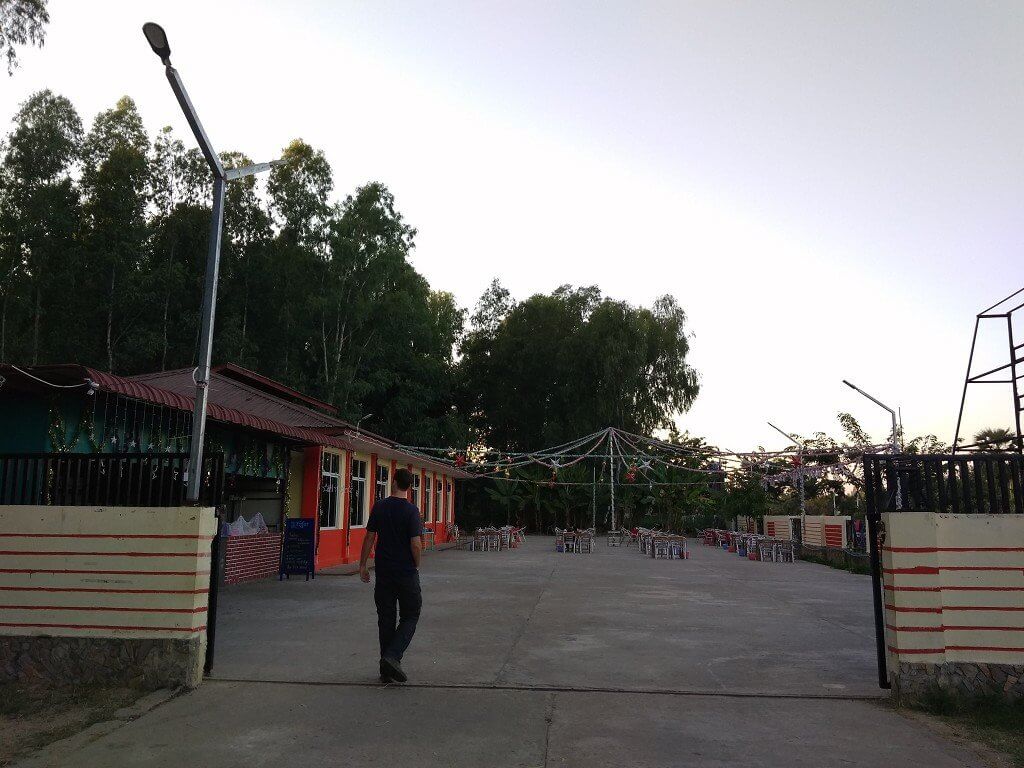
Day 4: Renting a Motorbike and Driving it About
Monday the 13th of January.
Our Semi-Automatic Motorbike on Empty Streets
Jonas asked after breakfast if the receptionists could arrange a motorbike for us. They told him that the motorbike would be a manual, but once it arrived Jonas identified it as a semi-automatic. This gave me the slight heebie-jeebies, but Jonas was confident in his ability to drive that. Nonetheless, he did Google the theory behind semi-automatic motorbikes before we got our vehicle.
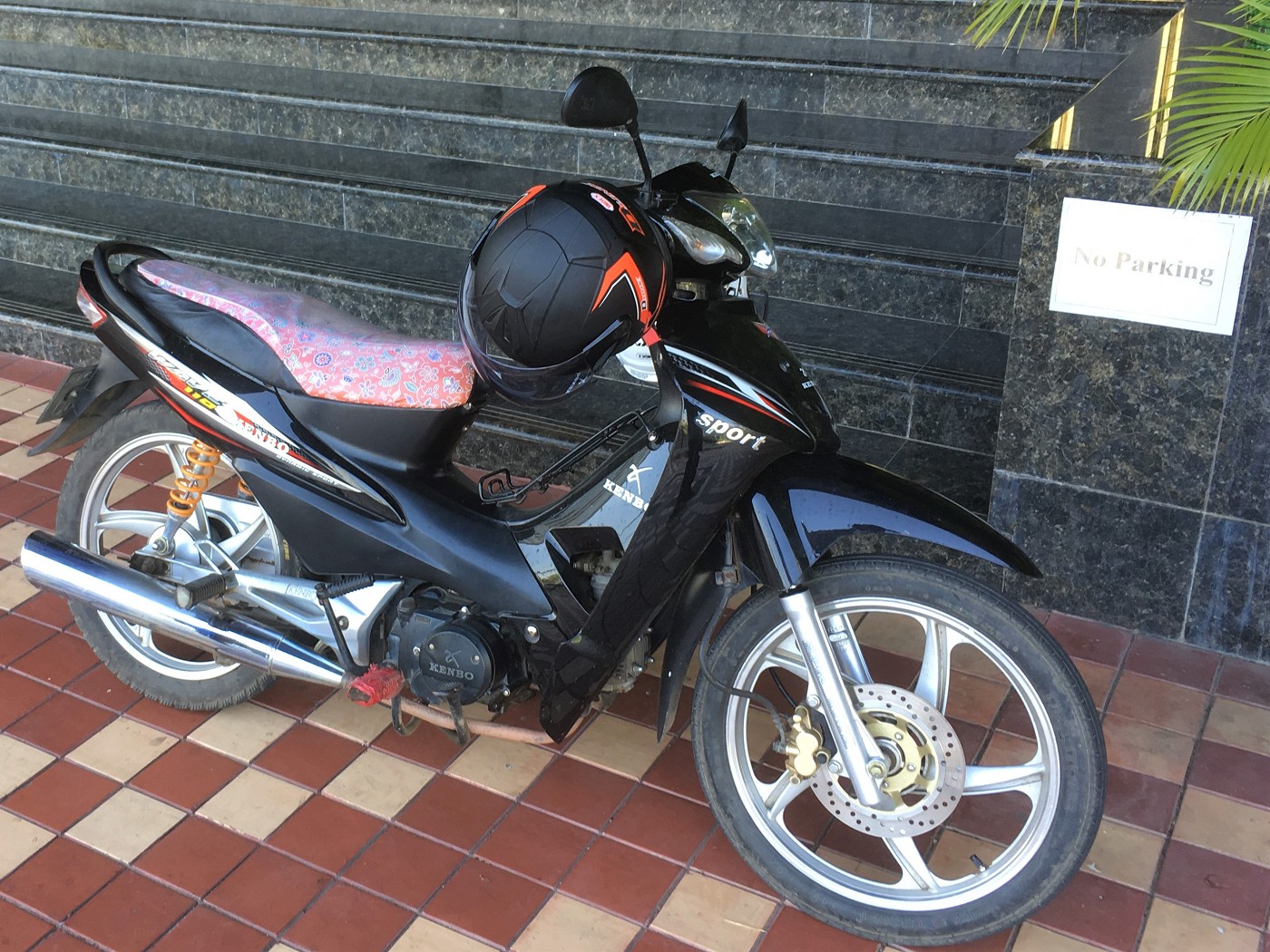
Jonas drove around a bit to get a feel for the machine before I hopped on the back. Our first stop of the day was the Uppatasanti Pagoda. This pagoda is the absolute highlight of Naypyitaw and was almost 15 kilometers away from the hotel zone.
Jonas listened to the GPS in his earpiece to guide him there. The roads were wide and only sparsely occupied by traffic. Blog posts from a few years earlier described driving around town as being the only ones on the road. Our experience tells us that Naypyitaw isn’t that much of a ghost town anymore, and might actually be a city that’s gaining momentum. Though it should be noted that it’s going at a slow pace.
The roads are in quite an excellent condition, mostly. The lack of serious traffic makes Naypyitaw the ideal training ground for practicing motorcyclists. Jonas got his motorbike license in Colombia back in 2017. After leveling up from automatic bikes to semi-automatics, he learned to drive completely manual motorbikes there—without taking a passenger. But ever since, he’d only driven completely automatic motorbikes (motor scooters) in various places around the world with me as extra weight.
We drive past barren greenfield land when I see the Uppatasanti Pagoda in the distance. I ask if we can stop to take a picture from the distance.
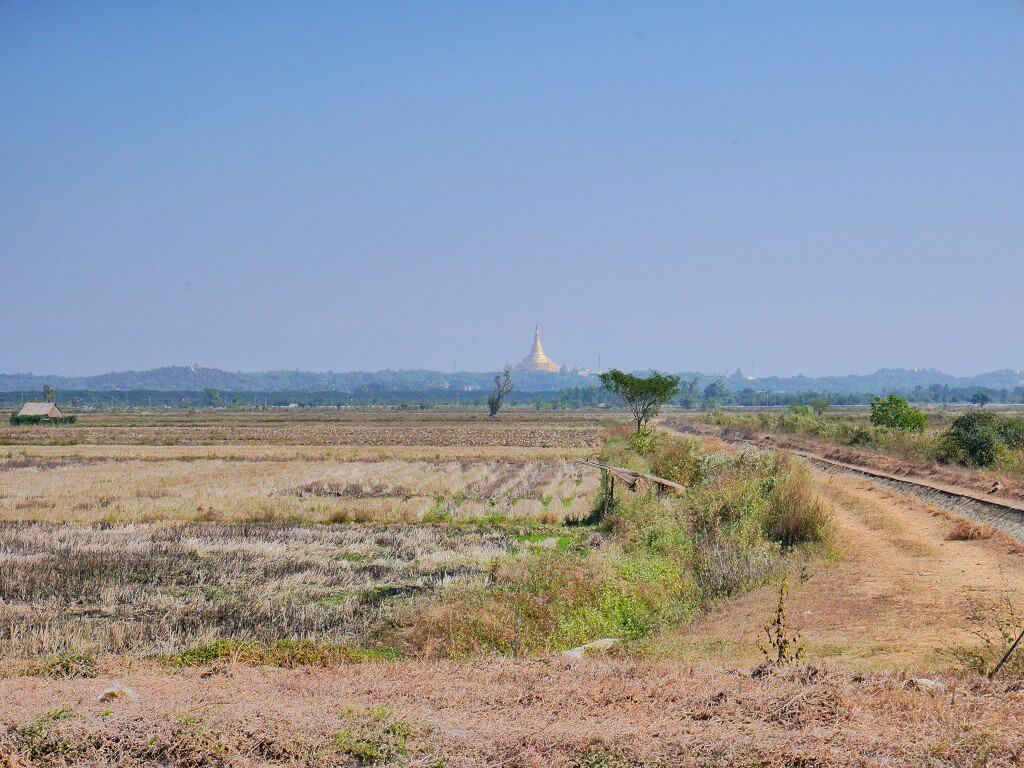
We drive on and encounter the Yarza Thingaha Roundabout (from Hell) for the first time. We go from four lanes on our road to five lanes on the roundabout. Jonas’ GPS malfunctions, so we drive more than a full circle on that roundabout only to end up on the Yaza Htarni Road towards the Uppatasanti Pagoda.
From the back of the moving motorcycle, I try to count the lanes on this wide road. From the right, we mostly drive in the second lane. That’s because people have decided that with this much space, the slowest lane is basically a roadside parking lot. It’s eight (8) lanes on our side, separated from the opposite traffic by a very landscaped verge. We share this road with motorbikes, horsecarts, and maintenance trucks alike.
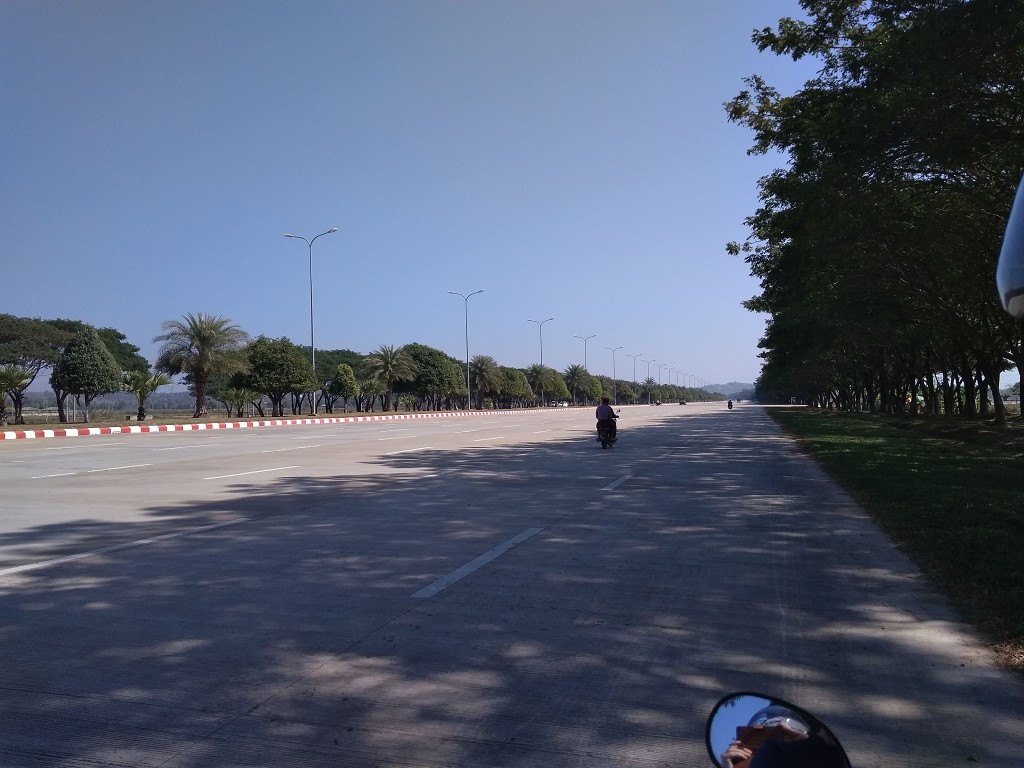
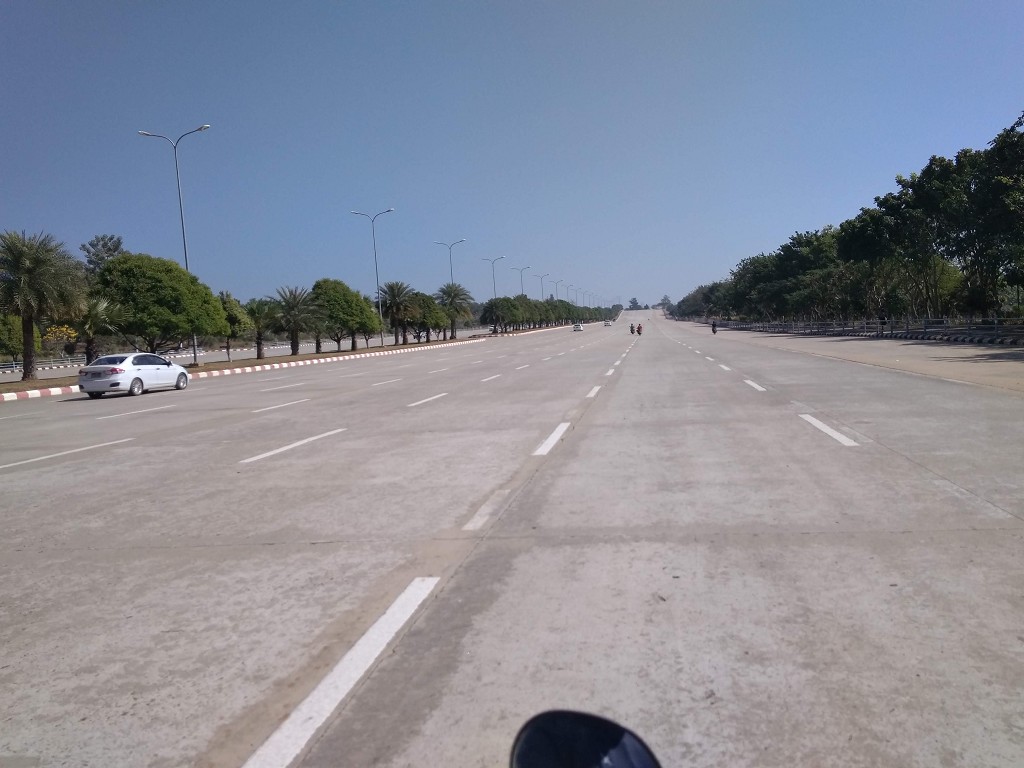
After a few kilometers, we cross all the lanes to take a left at Uppatasanti Pagoda. Finally!

Uppatasanti Pagoda
We drive to the pagoda past a few checkpoints that wave us through. We want to park our motorbike somewhere near one of the elevator towers, but as we drive around the pagoda counterclockwise, every viable parking spot seems to have a guy that waves us on to find a parking spot elsewhere. In the end, we actually surrounded most of the pagoda until we found a parking spot. There was just one person there who didn’t wear a uniform.
Once off the bike, that man got up to tell us something. Jonas assumes it’s about the motorbike, but I notice the man takes offense at my outfit, which clearly shows off the lascivious shape of my… knees‽
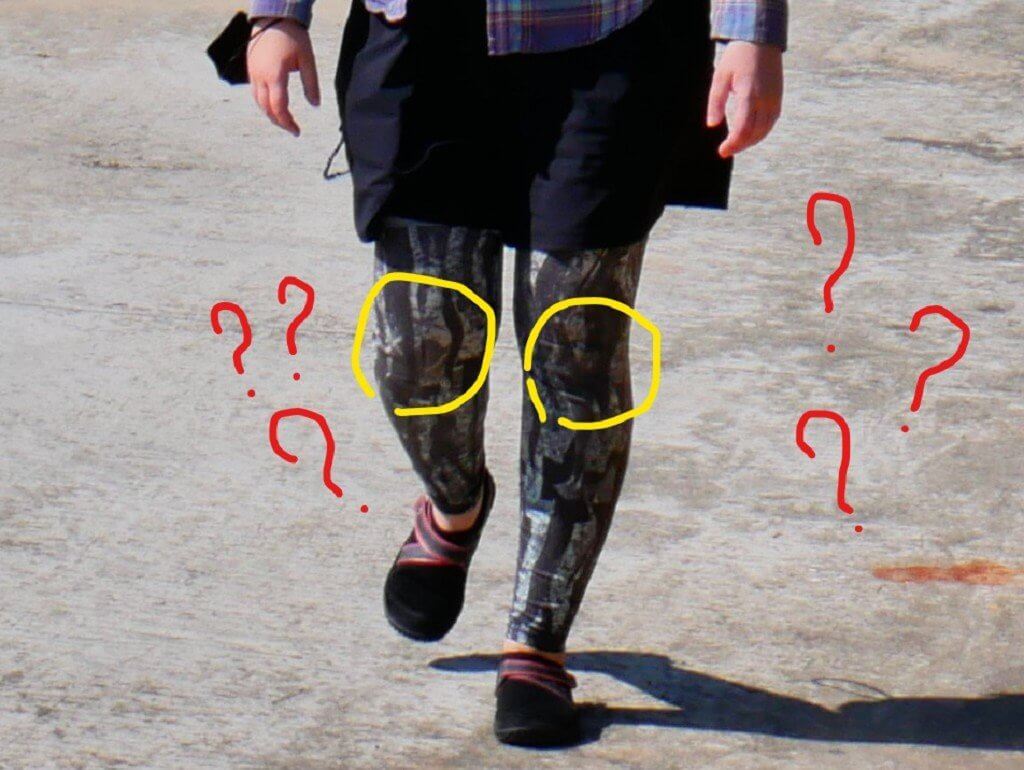
We’re not at temple grounds yet, so the dress code for pagodas doesn’t really apply to the parking lot, methinks. For the sake of not causing a scandal, I grab my sarong from my backpack one minute earlier than anticipated and wrap it around my waist, veiling those knee bulges from the man’s eyes. He’s relieved that I know how to dress modestly for a temple. You’re welcome, random man.
At the elevator, we take off our shoes in front of a guard. I immediately step into a fucking half-dead Asian giant murder hornet and get stung in the toe.
Oof. Owie. Ouch.

Not the guilty murder hornet, but a similar dead one that we found all over the Uppatasanti Pagoda floor five minutes later. And the beetle I’m foreshadowing…
The guard pities me and points me to a chair inside the elevator building. I sit down and assess the damage, while our shoes get an upgrade into a VIP storage room for shoes. And I mean that literally! The cardboard shoebox read ‘VIP’ on the side.
We get into the elevator and go to the pagoda deck. Which is…
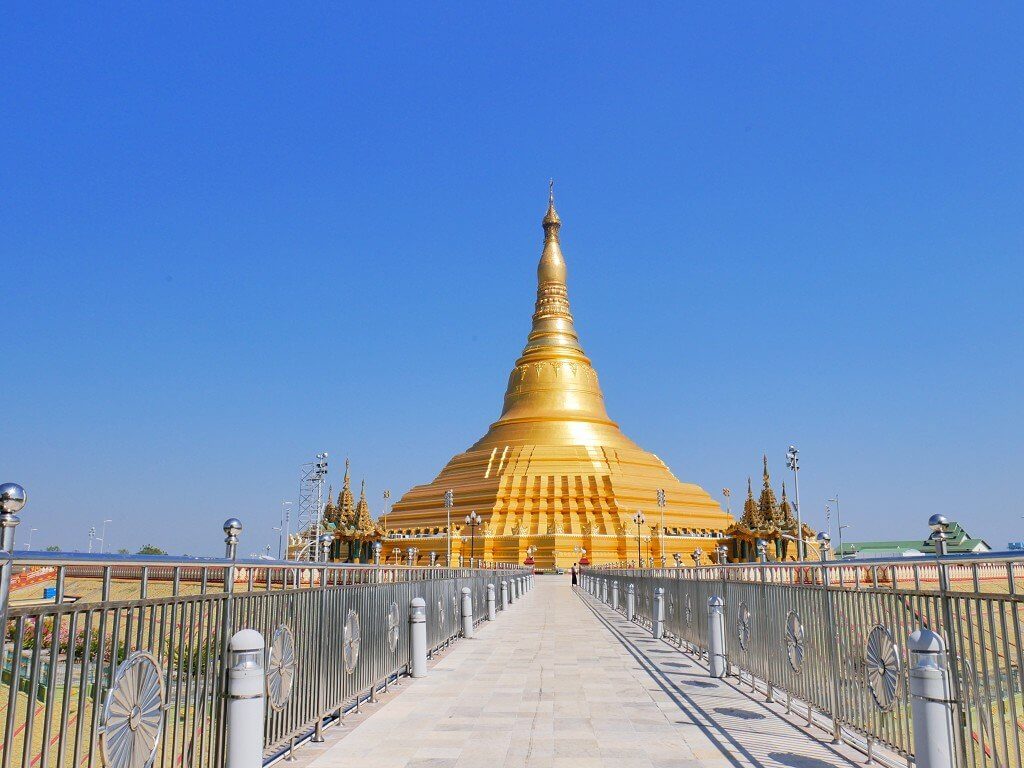
Wow. Shiny.
We begin walking around the pagoda counterclockwise and while being wowed by all the shiny gold I half-step into a (dead?) beetle. Do you know a half-step? Like you step into something but notice something is off, so you only half-crushed it with your foot sole? Anyway, the beetle made a loud C R O N C H sound. I’m pretty sure that killing a creature on Buddhist temple grounds is pretty bad for the cycle of reincarnation, even if it was not my intention.
We continue walking and also circumambulate once in the interior of the pagoda. I didn’t know this during my visit, but being allowed inside a pagoda (especially as a non-Buddhist) is actually pretty rare. If you want to see the relic-bearing center of a pagoda once, you must visit Uppasanti Pagoda on your trip to Myanmar. Note: women may enter the interior, but they can’t access the platform in the deep center of the pagoda, which is reserved for men.

In the southeast corner of the plaza is the tagundaing, a type of flagstaff/victory column with statues on it. Here, pictured with the pagoda’s hti, or golden umbrella with bells.
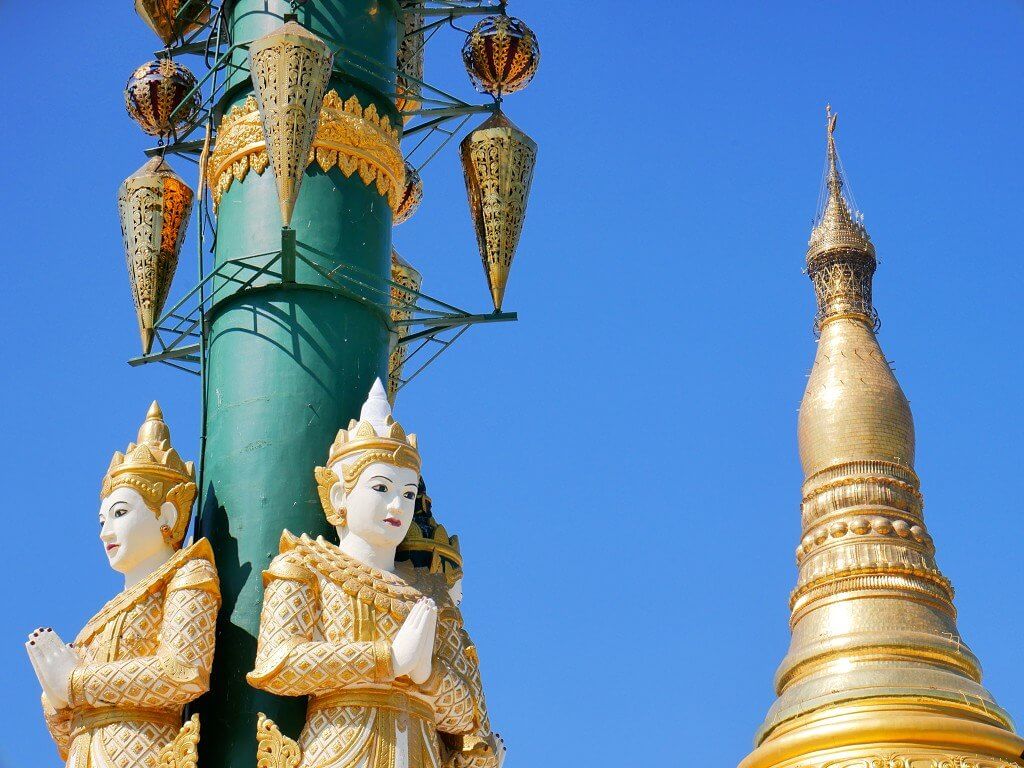
And then there’s also the big prominent temple bell on the northeast side, which you may ring.
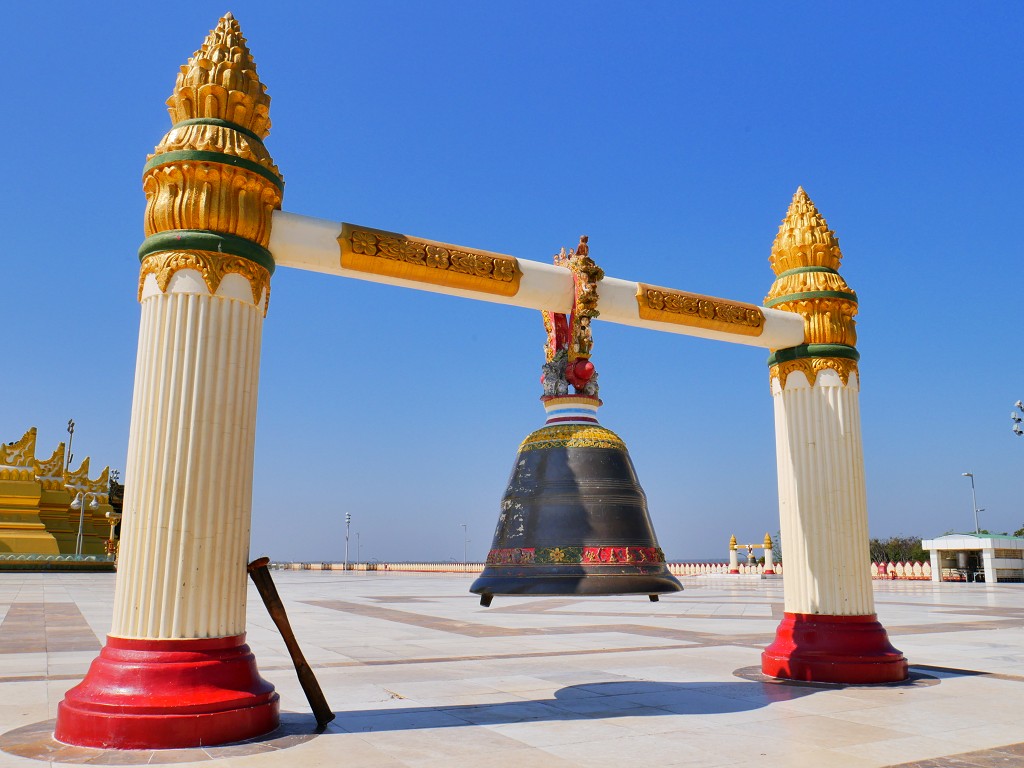
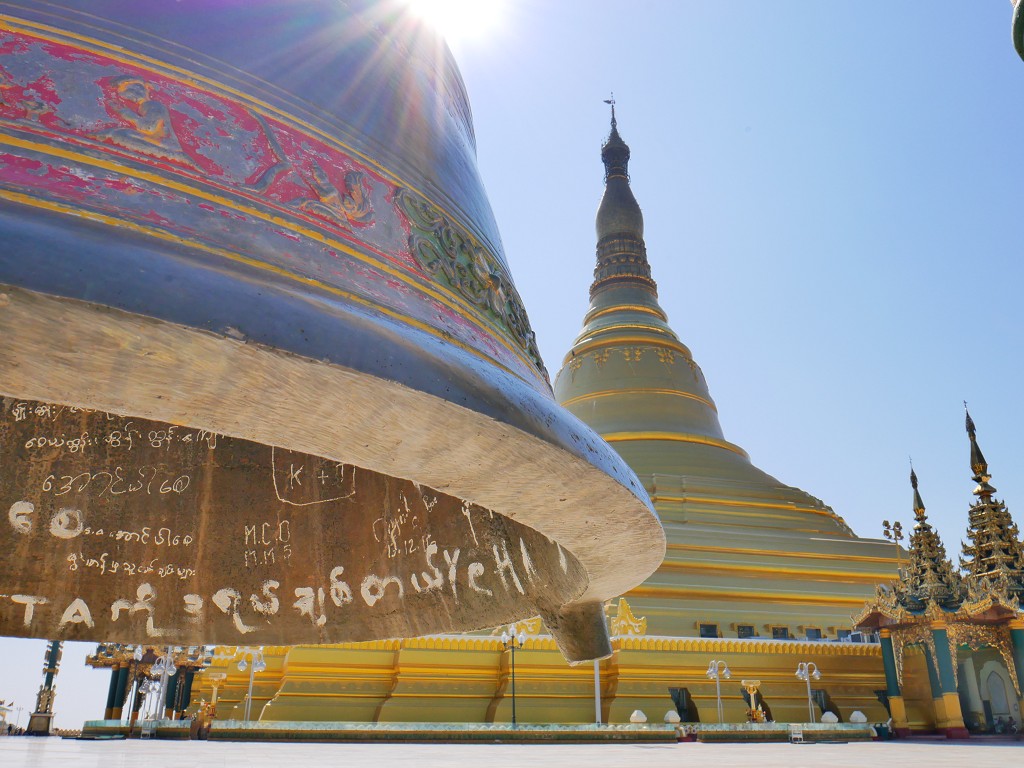
Like the rest of Naypyitaw, it was very quiet and uncrowded at Uppatasanti pagoda. The only thing that broke the silence for a while was when a monk spoke some kind of prayer or mantra over the loudspeaker.
Once we had finished with Naypyitaw’s most famous landmark, we returned via the elevator to pick up our shoes and drive on to the widest highway in the world. This is one of those things you’ll find on Atlas Obscura and are easy to include in an itinerary by motorbike. But before we left, we checked out this Buddha statue surrounded by water in some sort of arena. We encountered some people sitting in the shadow of trees with incense in intense meditation.
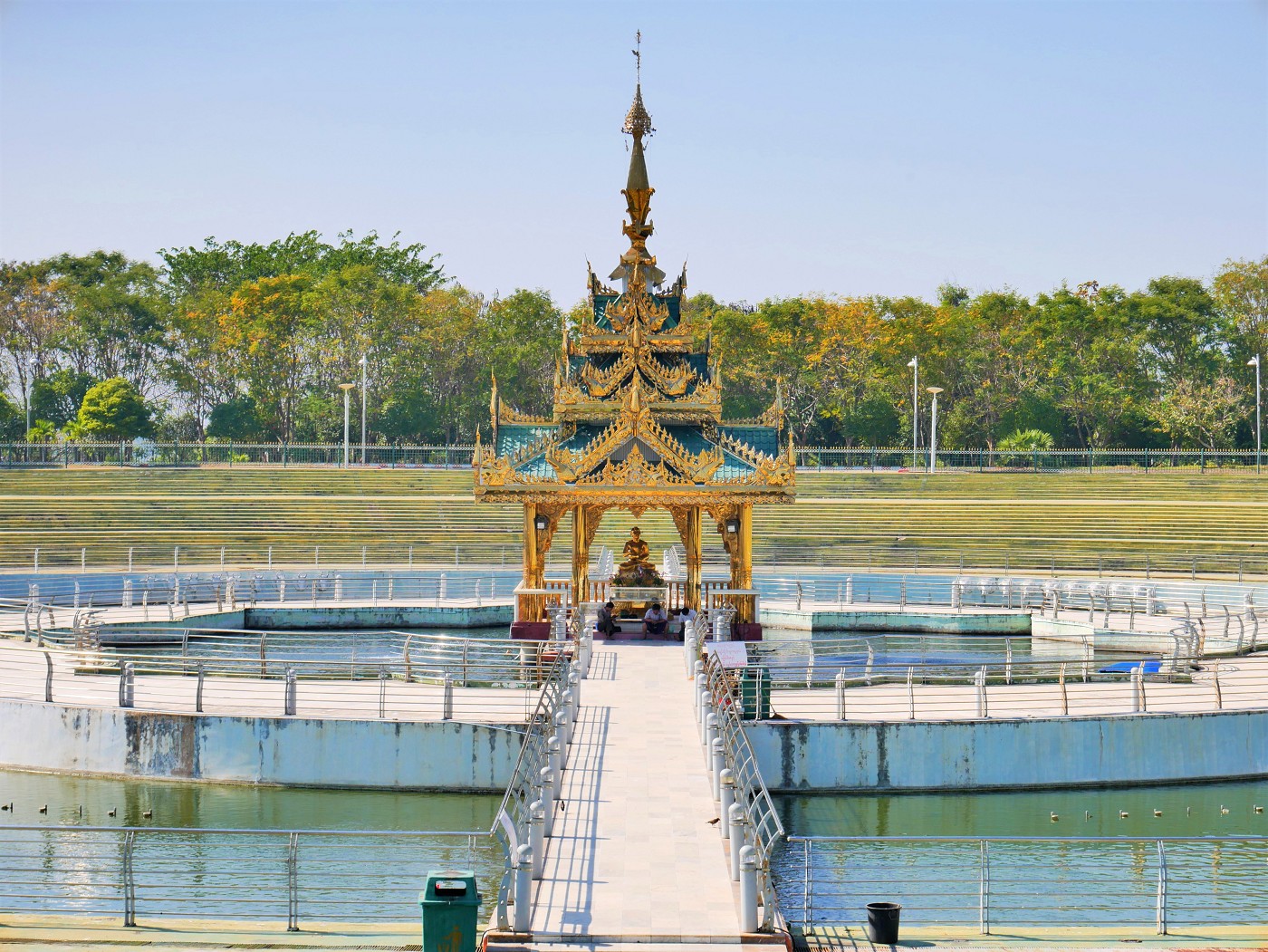
20-Lane Highway/Runway
When driving to the widest highway in the world, we had a scary moment at the Yarza Thingaha Roundabout—infrastructure from hell. Our eight approaching lanes arrived at the place where it became five circles around an ornamental island. We needed to go straight, but before we even entered the roundabout, a car that approached us from behind cut us off with near collision. Then we still had to go over the roundabout, which was so distressing that we circled it twice before taking our exit. So we took a break in the slowest lane which is just a glorified parking lot. I’m not sure what was the issue, but there is too much space on the roundabout and too little guidance on what to do.
We continued the drive to the spot where our side of the road increased from eight to ten lanes without a barrier for the other traffic direction. This happened after the next roundabout, which was of the same size as the previous one but completely empty. We were now driving inside the Ministry Zone of Naypyitaw, which covers an absolutely enormous area with this road to match.
There are ten lanes to choose from and very little traffic driving it. Though it feels like the paradox of choice, Jonas’ driving education trumps any wild ideas to drive in the ‘fast lane’ and we stick to the right. Not the rightmost lane; that one’s for parking. We stop to take photos in front of one of the Hluttaw’s main entrance gates. Not that we can see the humongous 31-building parliamentary complex; it’s too far from the road.
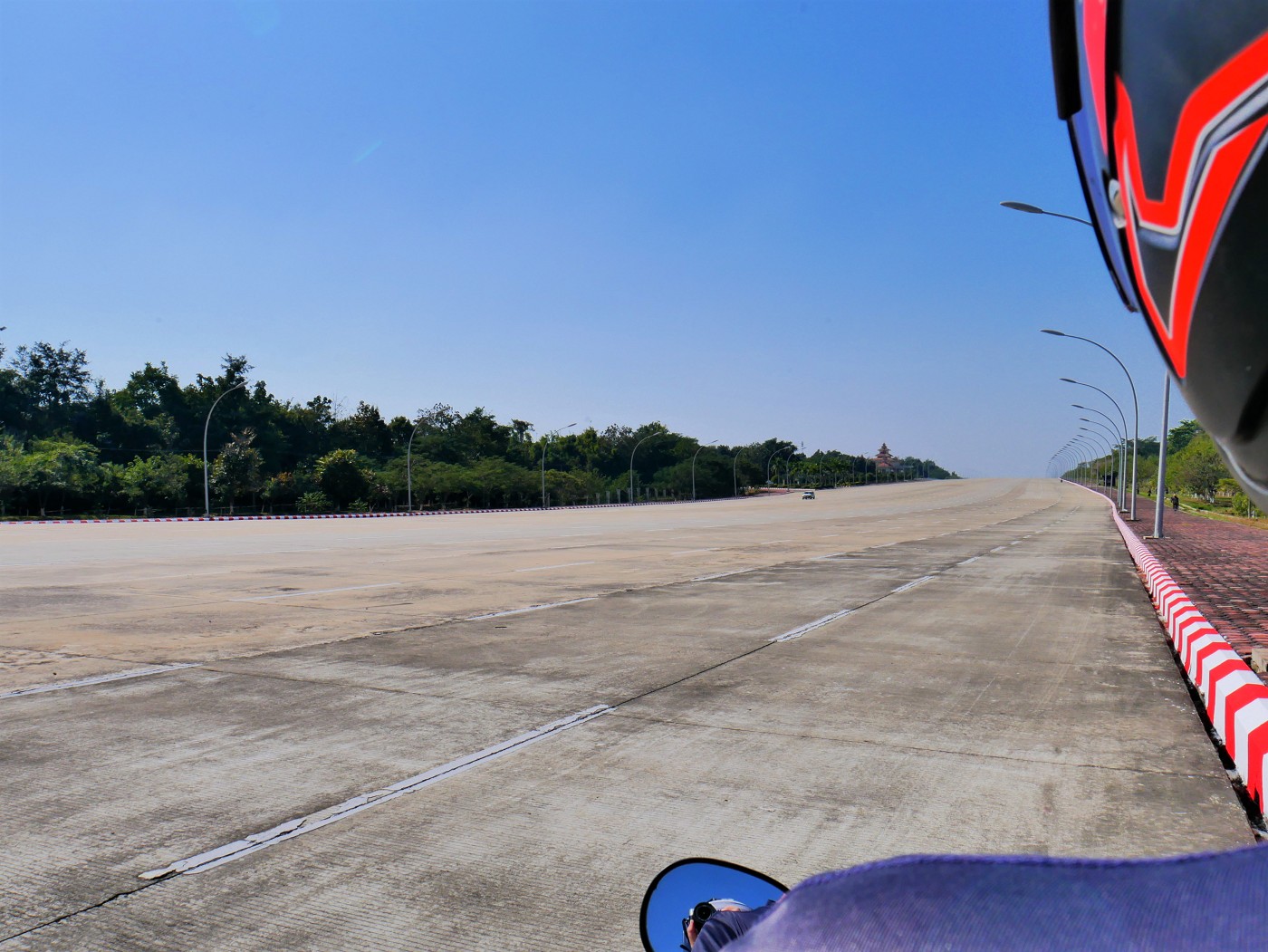
One theory about why the 20-lane highway was created is about military and governmental paranoia; they got so anxious in populous and dense Yangon, that while planning Naypyitaw they wanted an exit strategy. The 20-lane highway is wide enough to land big aircraft and serve as a highway strip. The longest straight stretch – for some ungodly reason there’s a bend in the road – is 1.9 kilometers long. It’s long and wide enough for quite many airplanes in case one needs to rapidly take to the skies. All they have to do is take the signs away that sometimes mark the center of the road.
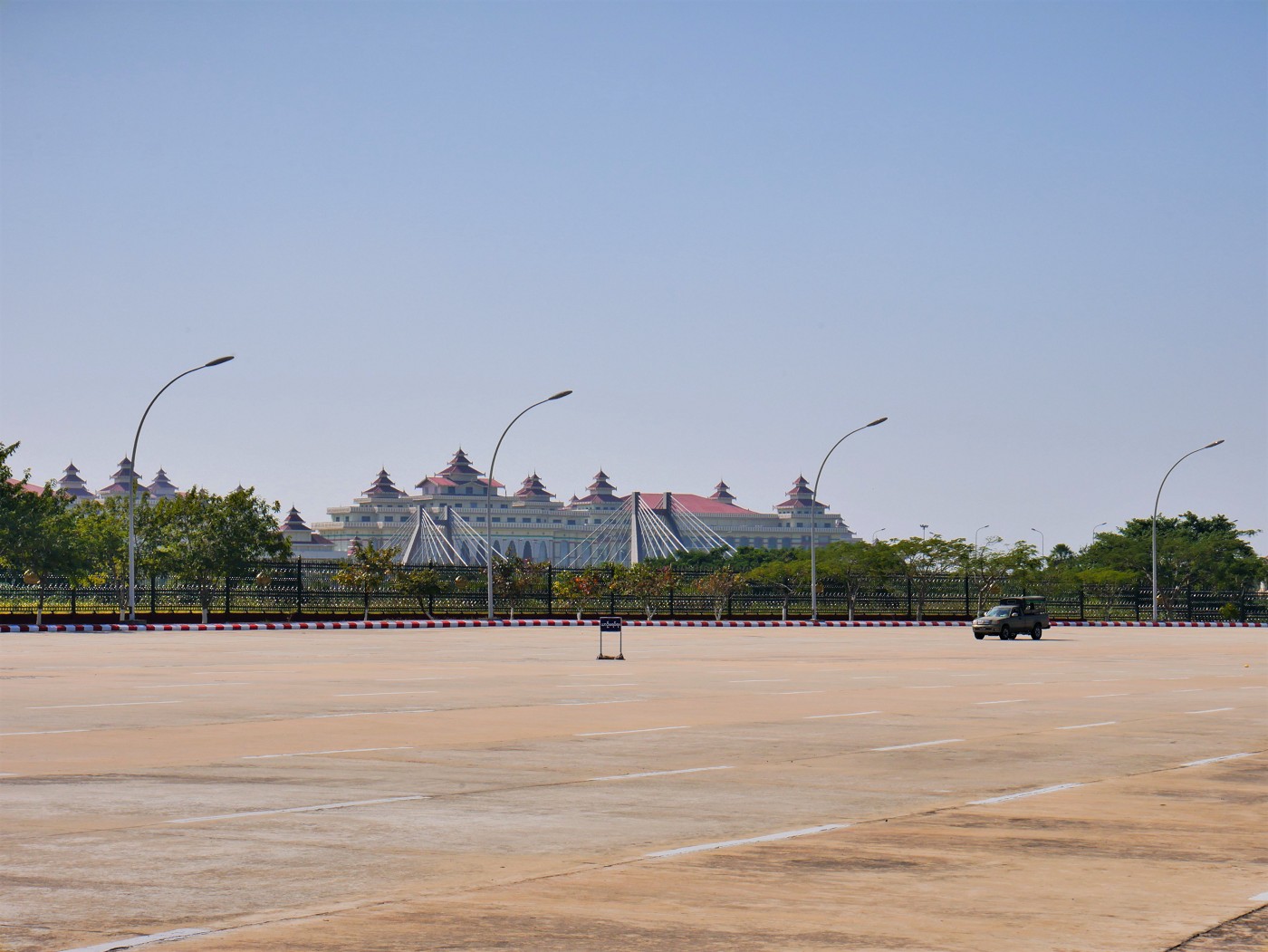
This entire city feels like it’s made for giants—and I feel like a toy. The photos we took under slight protest of the guards across the street don’t do it justice at all as the concrete approaches the horizon and the lanes blur together the further we look. So I included a satellite image with a crossing of a ‘regular’ four-lane road.
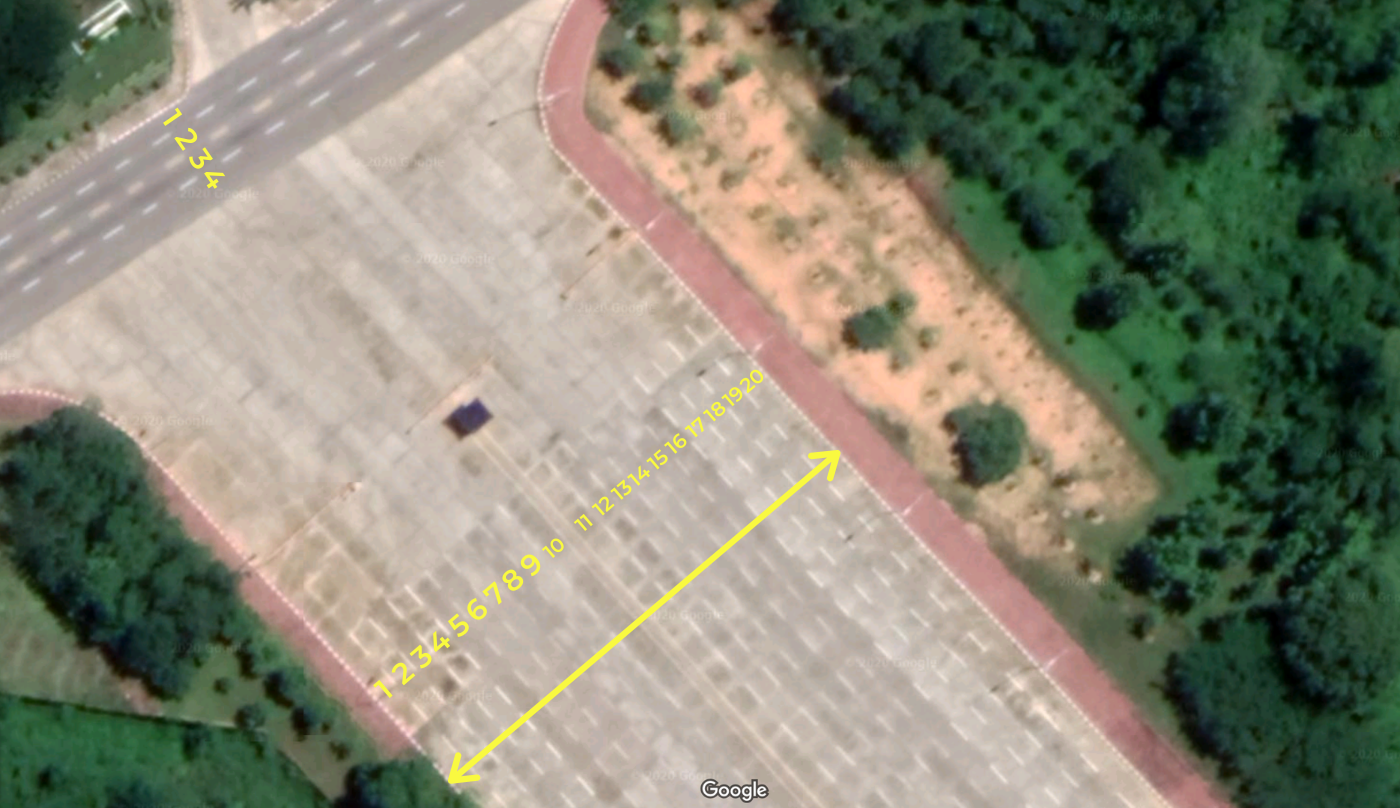
By the way, there are lots of travelers who visited Naypyitaw closer to its inauguration date who have pictures of themselves lying down in starfish-pose on the middle of the 20-lane highway with no traffic around. Like a concrete Zen garden to meditate in. Though I contemplated doing that, there was actually enough traffic to not do something that silly and potentially dangerous. I wouldn’t even want to cross the road on foot. Perhaps we visited at a busy time (13:00-ish), or perhaps I’m getting too old for these things and my younger self would have totally risked that. All I can say is that in January 2020, Naypyitaw has enough traffic to simply appreciate the eagerly-poured concrete from the curb.
The Hluttaw
As mentioned before, the guards in front of one of the two entrance gates of Myanmar’s parliament (Hluttaw) wanted me to stop taking photos of the building. But I could only see the tall fences, the cable-stayed bridges across the ditch, and the Myanma-style roofs peeking out above the trees. The main buildings start over 800 meters away from where I’m standing. The complex is huge, but the buildings don’t appear to be very tall. Or perhaps it’s the curvature of the earth that obscures my vision. Wack.
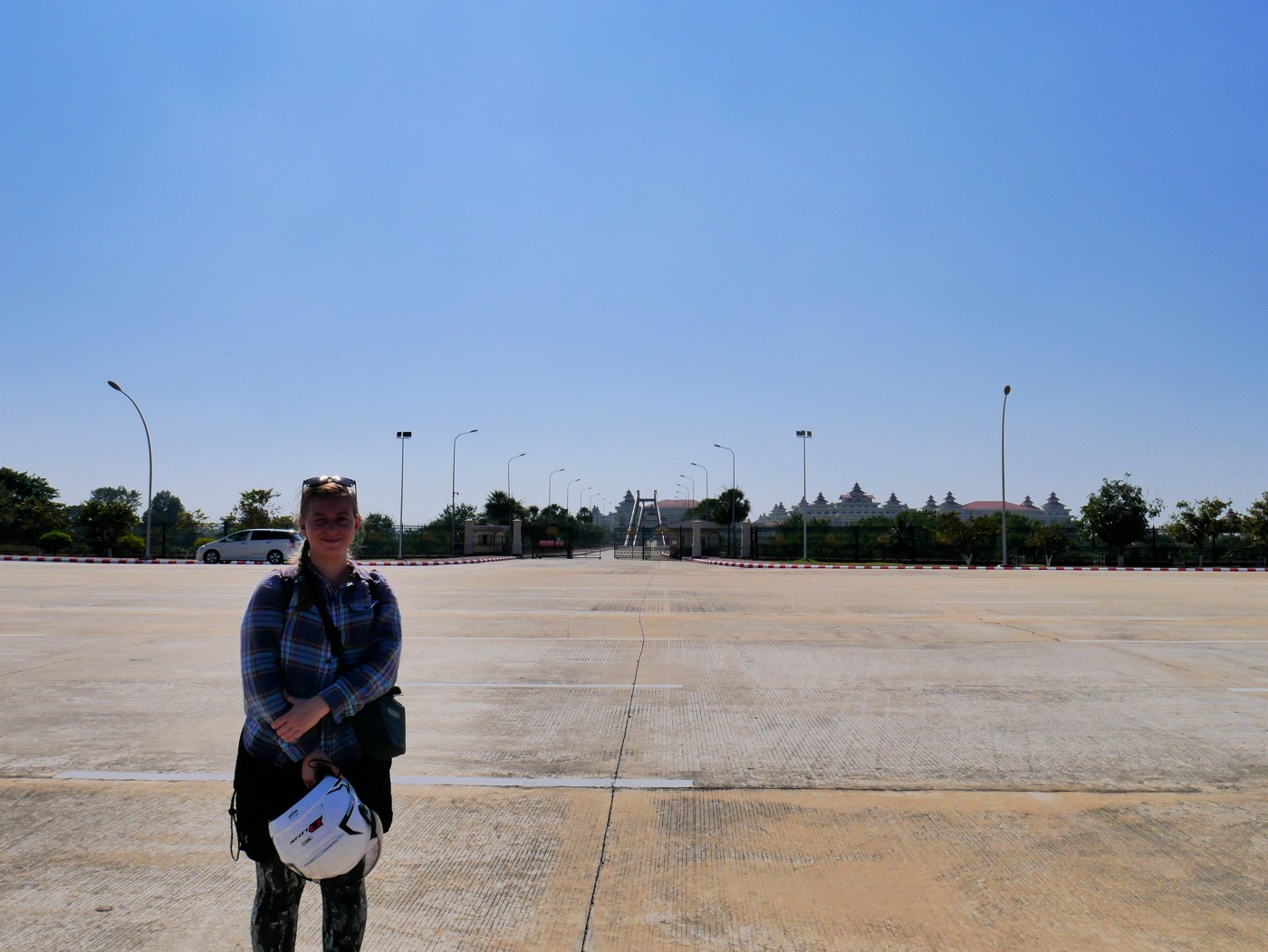
Since we tried to visit City Hall spontaneously two days earlier, we already knew the answer to if we’re allowed to visit the Hluttaw.
[Though it might be possible for foreigners to visit the Hluttaw as well. There are links on their official websites to register (web archive link, probably because of the 2021 coup) for a visit (web archive link, probably because of the 2021 coup). Perhaps try to arrange that through your hotel in Naypyitaw]
All we could do is surround the building trying to catch a glimpse and further reading on the structure on the internet. The Pyidaungsu Hluttaw (ပြည်ထောင်စု လွှတ်တော် – ‘Assembly of the Union’) parliamentary complex is made up of 31 buildings to represent the Buddhist planes of existence. You can see how Buddhist nationalism pervades everything and establishes a very rigid identity of what is, and what isn’t Myanma. I tried counting the buildings on Google Satellite view and couldn’t really figure out what counts as one building since many of them are connected by covered walkways in case of heavy rains.
Encircling the Hluttaw counter-clockwise, we passed by a ministry, followed by a giant statue of a golf ball. This marks the entrance to Naypyitaw’s City Golf Course. Though a deplorable sport, one golf course would be forgivable. But this is just one of Naypyitaw’s unjustifiably many, many golf courses, which I mapped for your convenience at the end of this article.
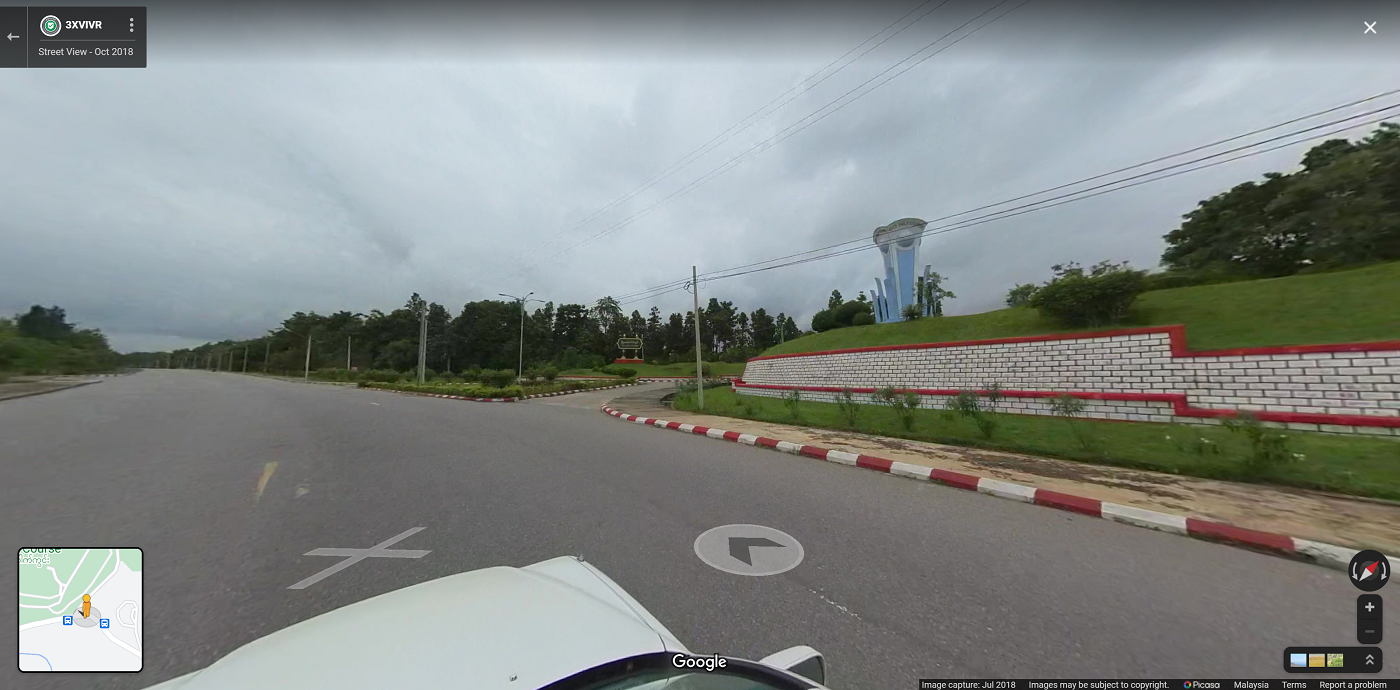
Sourced from Google Streetview. The image doesn’t do justice to the size of this ball statue.
We were now on our way to Naypyitaw’s Myoma Market, which is one of the few tourist attractions left in this quiet city. We thought we’d be there within 10 minutes or so, but the drive around the entire Hluttaw takes ages. It’s a great road for driving a motorbike, with pleasant curves and lots of greenery and fresh air. Every now and then, there’s another entrance to the Hluttaw to our left. All of them are heavily guarded and with sparse traffic that mostly looks like informal food delivery.
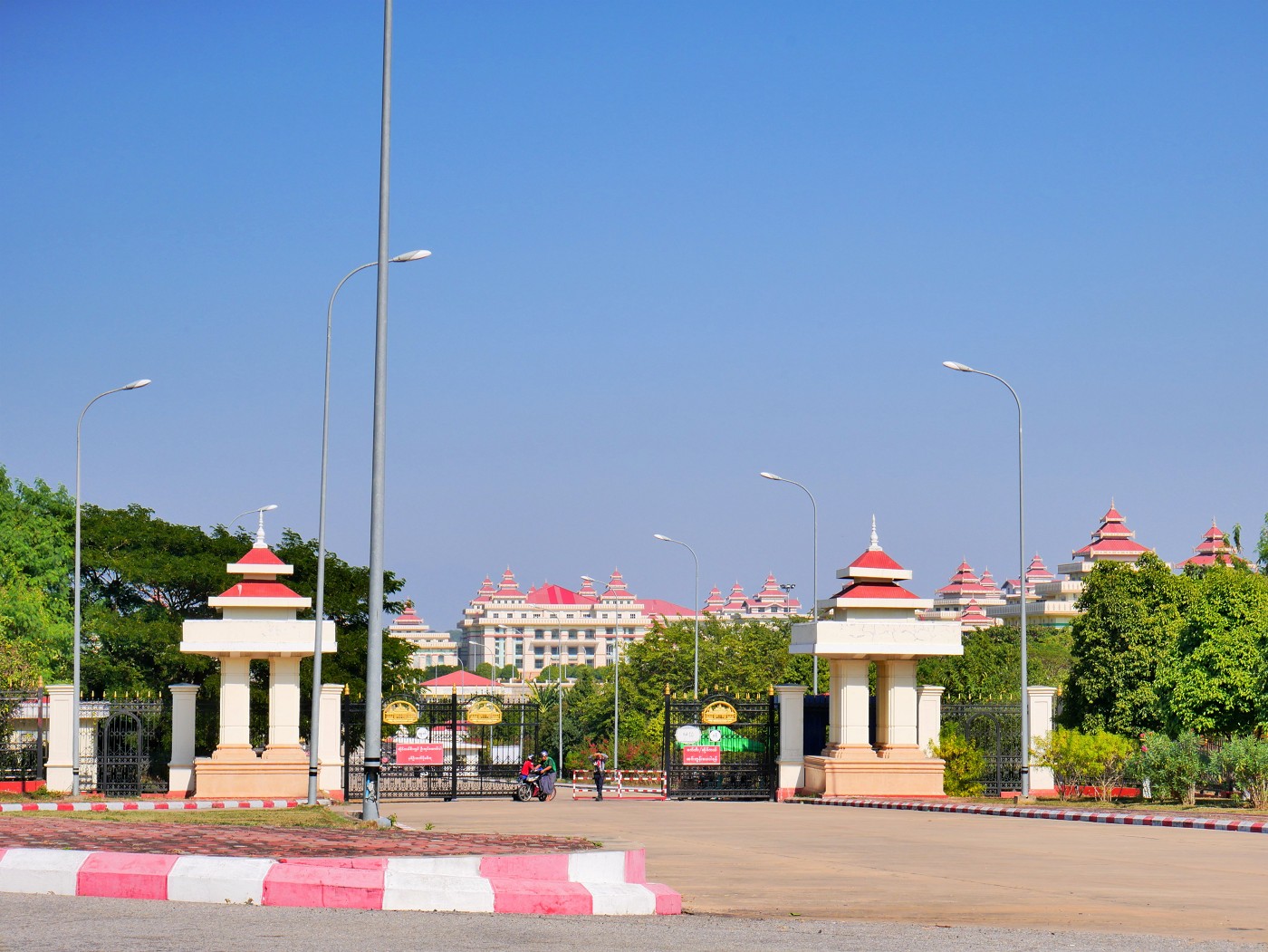
Myoma Market
At last, we arrived at the Naypyitaw-famous Myoma Market (မြို့မစျေး—which simply translates to ‘city market’). The internet says it’s the place to be, the only place to be because nothing goes on elsewhere in Naypyitaw. I tend to disagree since Thapyagone Market wasn’t devoid of life either. But it was Monday and the market building itself was closed. We knew that, but we’d forgotten about it. Still, Jonas gave it a try for the both of us, but the guard promptly pointed out that we couldn’t enter.
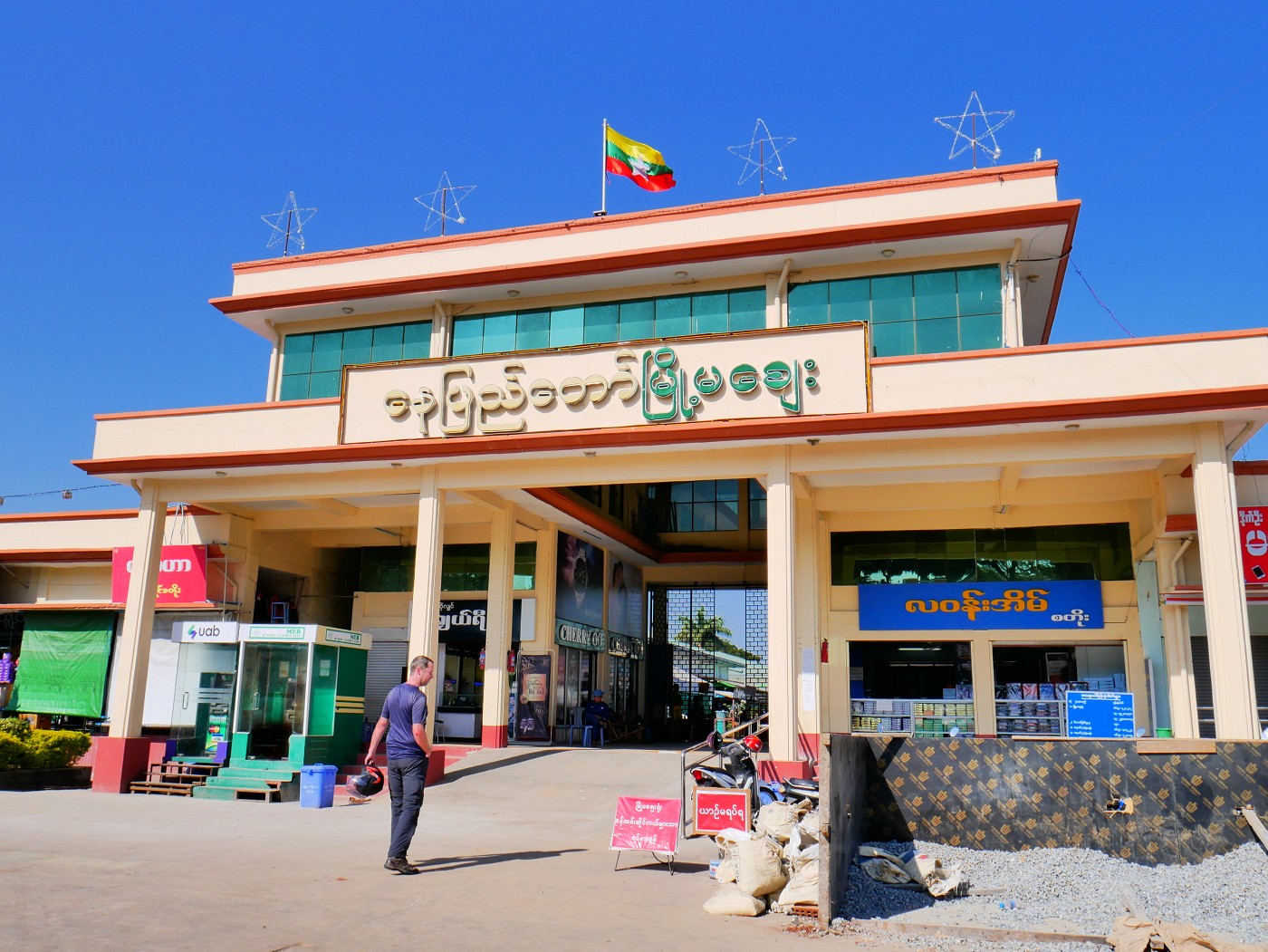
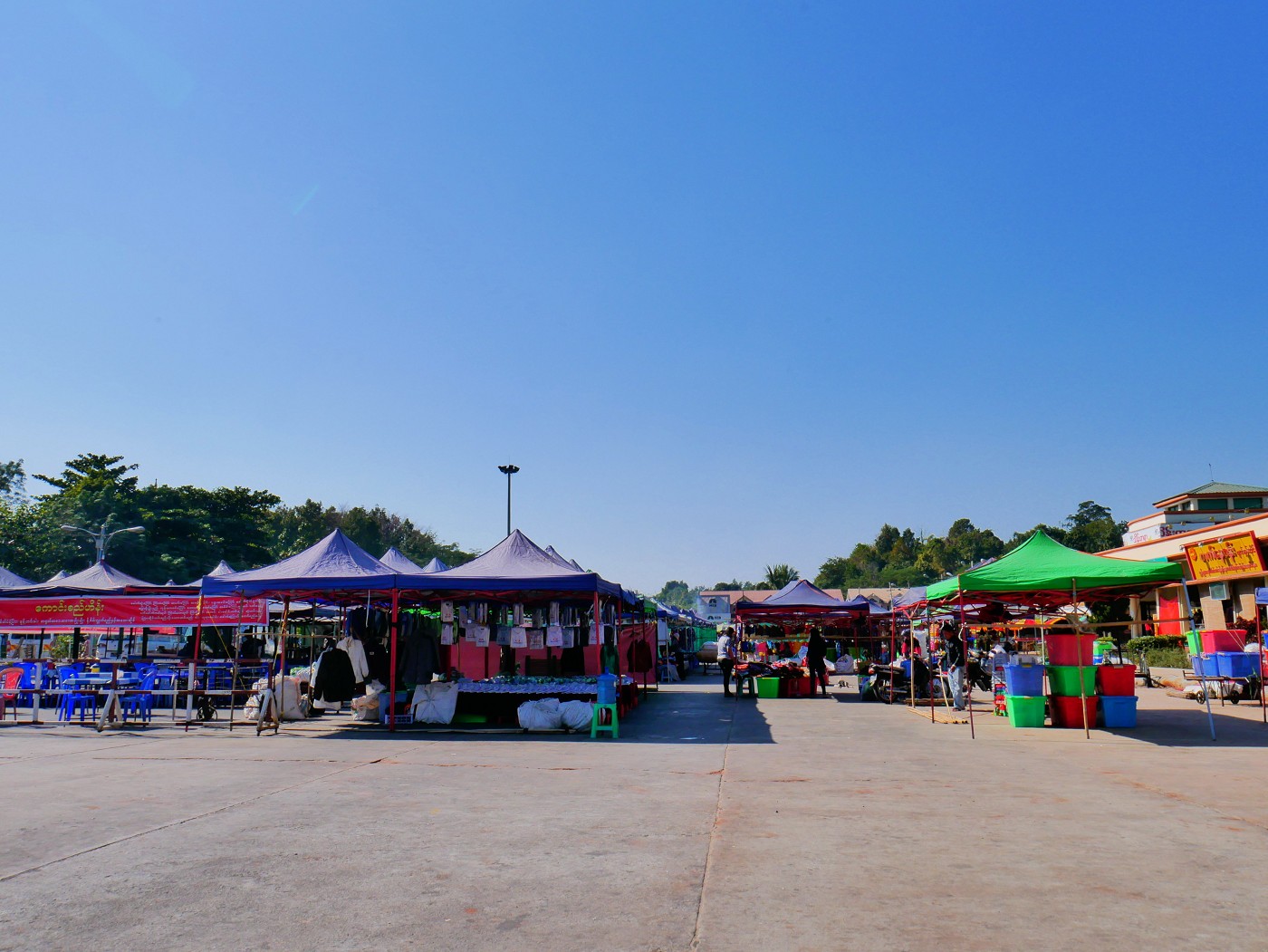
Nevertheless, there was a giant hawker center/night market outside on the parking lot with plenty of stalls. Slightly hungry, we walked past the stalls selling shoes and clothes and home electronics to eventually find a lady that was frying up some… poffertjes? Dutch people would call these mini pancakes a savory edition of poffertjes.
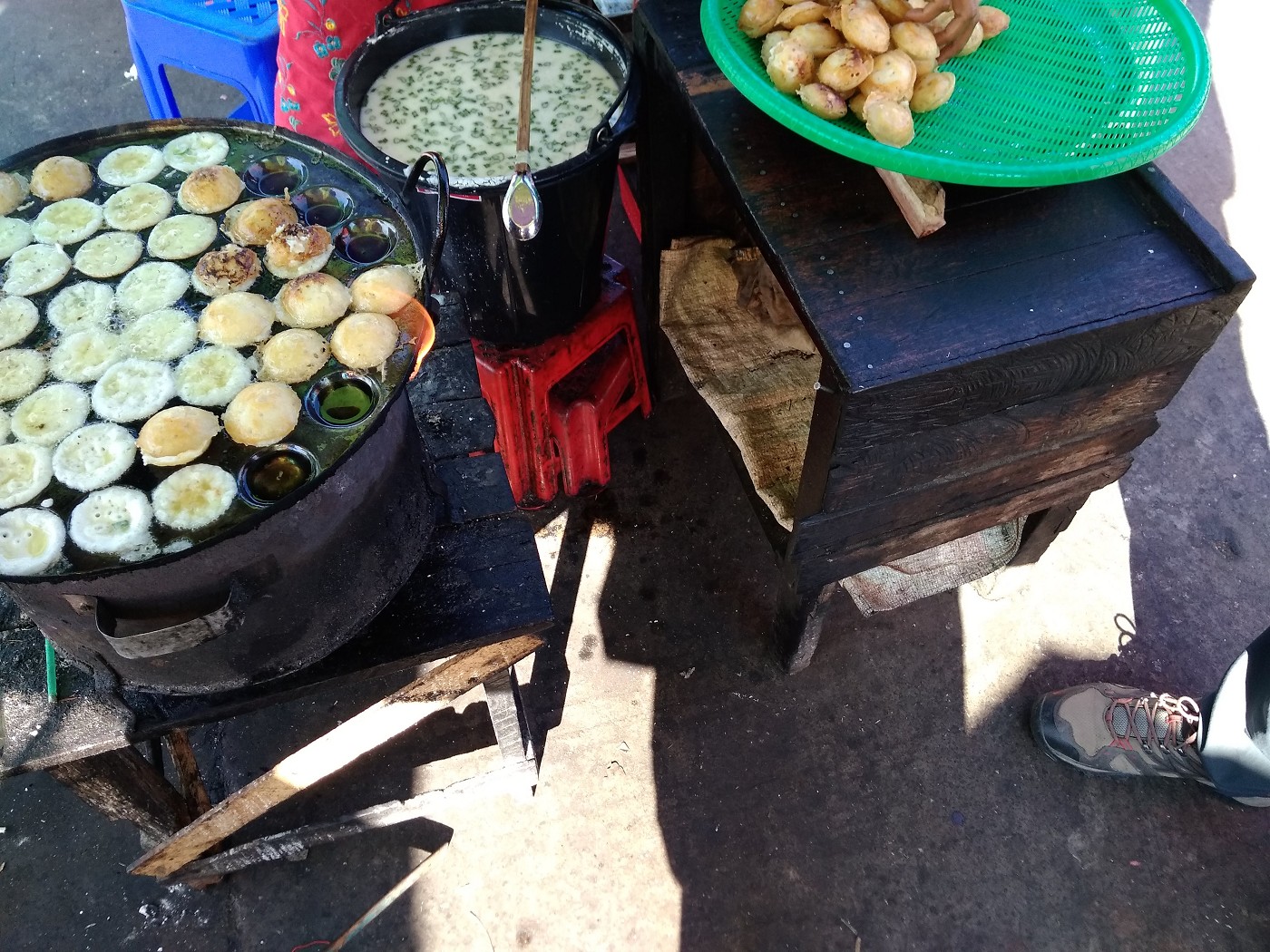
She was stirring in a big pot of dough with spring onions floating in it. I think she had just opened her shop, judging by the small heap of dough balls draining oil in the basket. I had no idea if these snacks were vegetarian, meaty, or – heaven forbid – fishy. Much later, I found out that the name of this snack is mont lin maya (မုန့်လင်မယား) and that it’s vegetarian. Great! Its name translates to “Husband and wife snack” because it joins two halves and here’s a recipe. Though we were hungry, we also didn’t want to make our fingers greasy, so we wrapped the thin plastic bag of yum inside another and hung it on the outside of my backpack to prevent staining.
Then we got back onto our bike and drove off past a massive convention center toward a neighborhood called ‘diplomatic housing estate’ on Google Maps. This would also be our last stop of the day before returning to Vegas Hotel.
Naypyitaw’s Diplomatic Housing Estate
Wikipedia said something about that the Chinese embassy had already decided to relocate from Yangon to Naypyitaw. But the Myanma government had trouble convincing anyone else to move to the new capital. Just like how government officials keep their families in Yangon, foreign dignitaries also don’t like the idea of moving to a city before its ensoulment. Nevertheless, Google Maps was enthusiastic about Naypyitaw’s diplomatic zone. It shows a grid pattern with designated park areas to provide enough greenery for diplomats and the like. I anticipated guiding Jonas through it by zig-zagging so we’d also see the parks and the smaller streets.
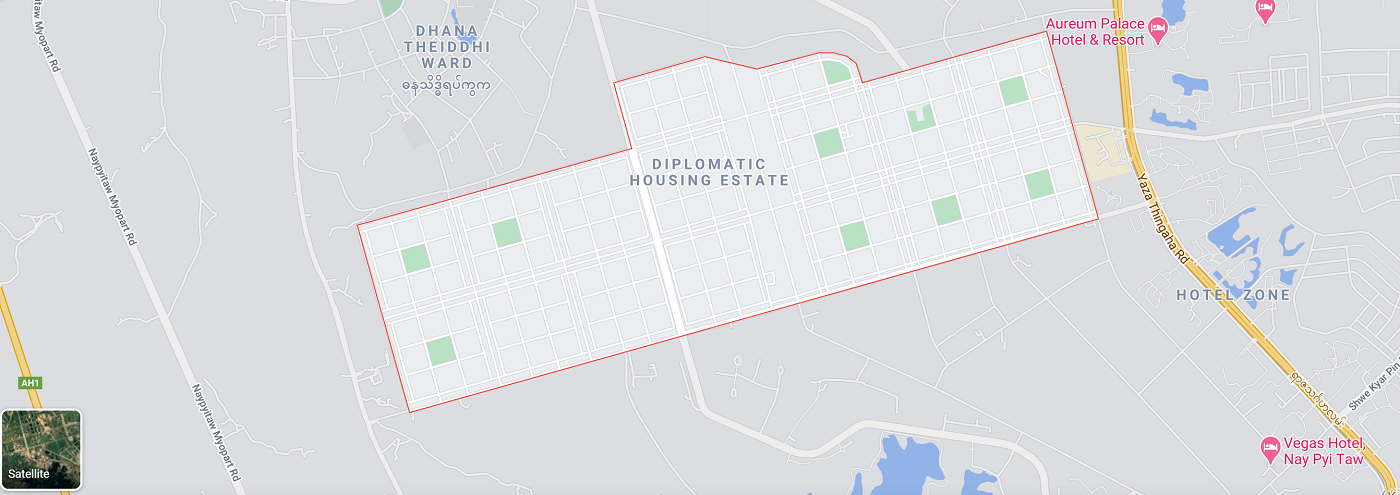
But I should have checked Google Satellite, not Google Maps because the arrival here was… anticlimactic.
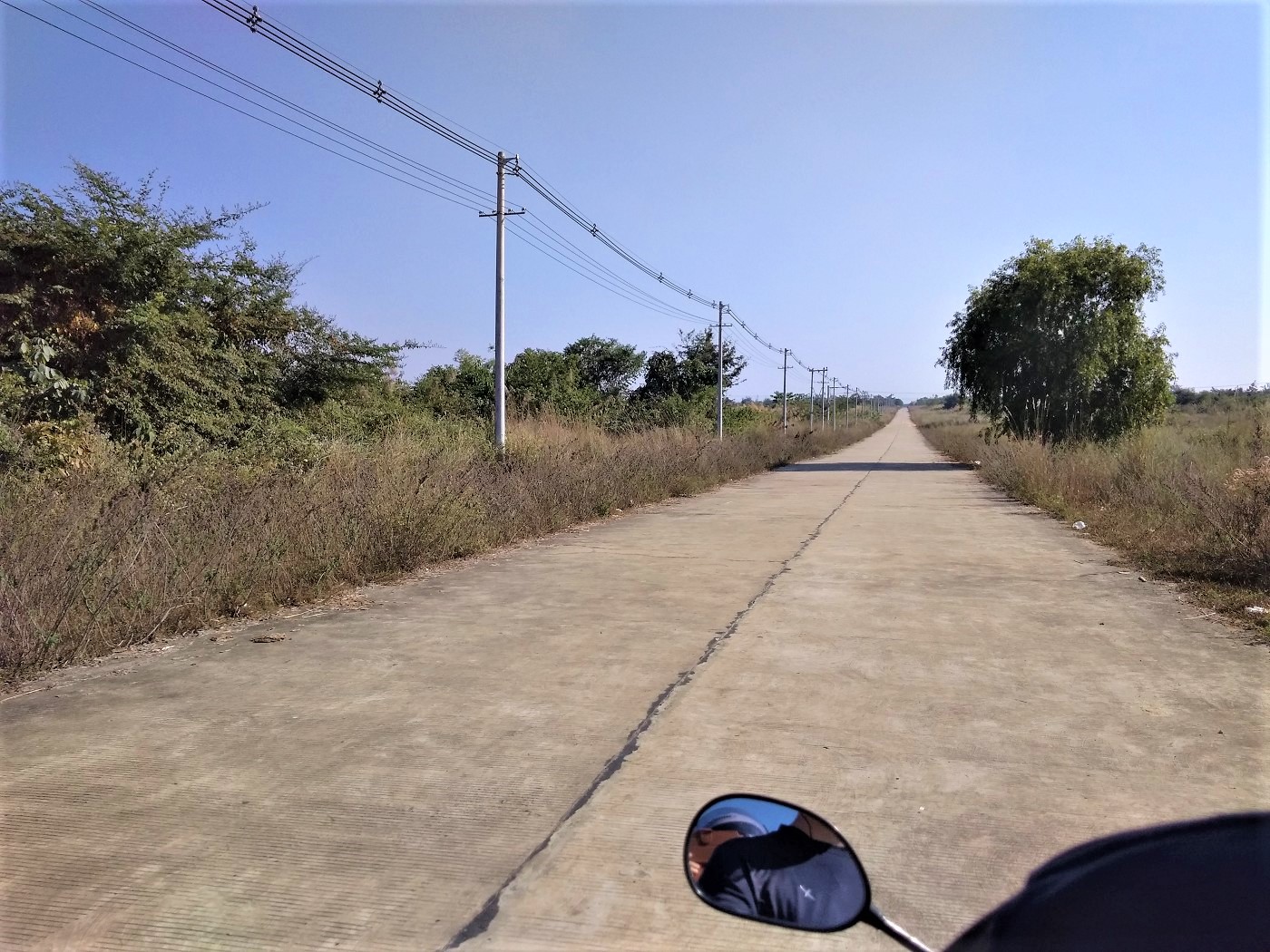
I turned GPS off and on to see if my phone was pulling a prank on us. But this was it. This was the embassy zone of Naypyitaw. And most of those side streets? They didn’t exist. I found out because I told Jonas to take a left and he replied “What left?”
I asked Jonas to stop in the shadow of a lonesome tree so we could reorientate. Only the main roads were real. Rarely, there was a desire path or cow path where the map showed a lane. We’d done enough off-roading in Old Bagan and we were low on gas, so we didn’t want to duck into those trails. This new information changed the entire route I had mapped out in my mind.
We kept driving westward along the main avenue, occasionally slowing down to give priority to some cows and their herder that used and stomped the trails that should separate the Qatari embassy from the embassy of the Phillippines. One day. One day and not today.
We drive out of the embassy zone past a vast complex that’s the training ground for Hilton Hotel workers. We laughed about how incredibly absurd that diplomatic housing estate was. Why is this mapped when it’s not real? Both Google Maps and Open Street Maps project it as if it already exists. We’ve never experienced something as crazy as Naypyitaw.
At the Yan Aung Myin Dam, we make a quick stop to appreciate the reservoir. You can see everywhere that the city was built for US American-sized car traffic; everywhere pedestrians want to go, they’ve made a patch to fix the infrastructure to make it foot-friendly. The fact remains that, for able-bodied people, walking is still the most democratic form of transportation. And becoming like a North American city is not something one should aspire to. There are entire YouTube channels dedicated to dunking on suburbs, William Levitt, and car-friendly infrastructure.

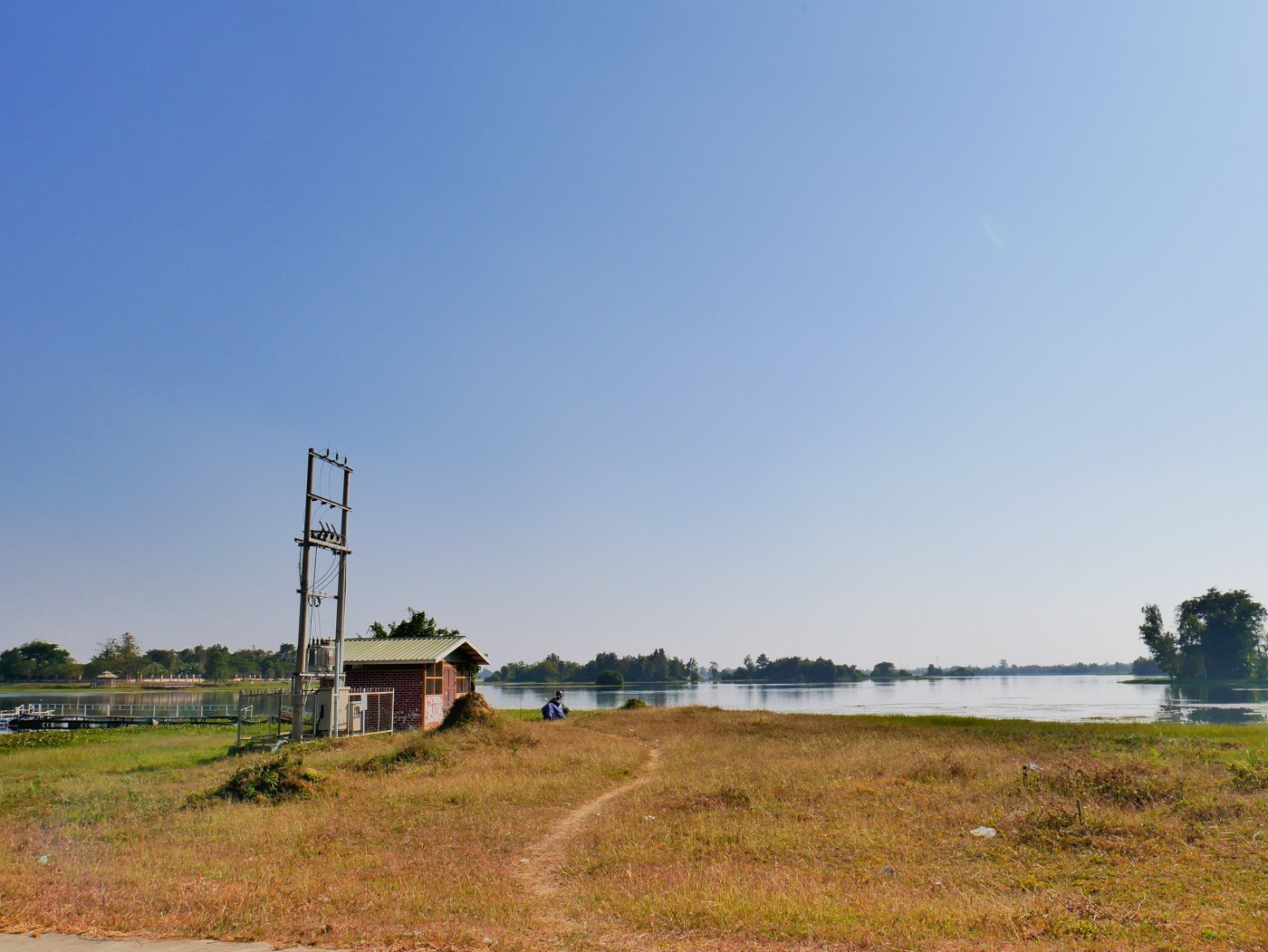
My map says that across the water, there’s yet another golf course. Do I believe it? I don’t know what’s real anymore in this city, but yes, I believe the golf courses are more real than Naypyitaw’s international relations corner.
Handing Back our Motorbike at Vegas Hotel
In the final stretch homeward, we contemplated making one last detour to fill up our gas tank. We’d asked at the start of the day if we need to bring the motorbike back with a full tank, but they’d told us there was no need for that. When Jonas had asked for a gas station, they had to think about it and then kind of shrugged. So we drove back to Vegas Hotel, parked it in the ‘no parking’ zone as they’d done at the start of the day, and handed back the keys at reception. All was good.
At last, in our room, we wolfed down our Myoma Market snack. It was still warm.
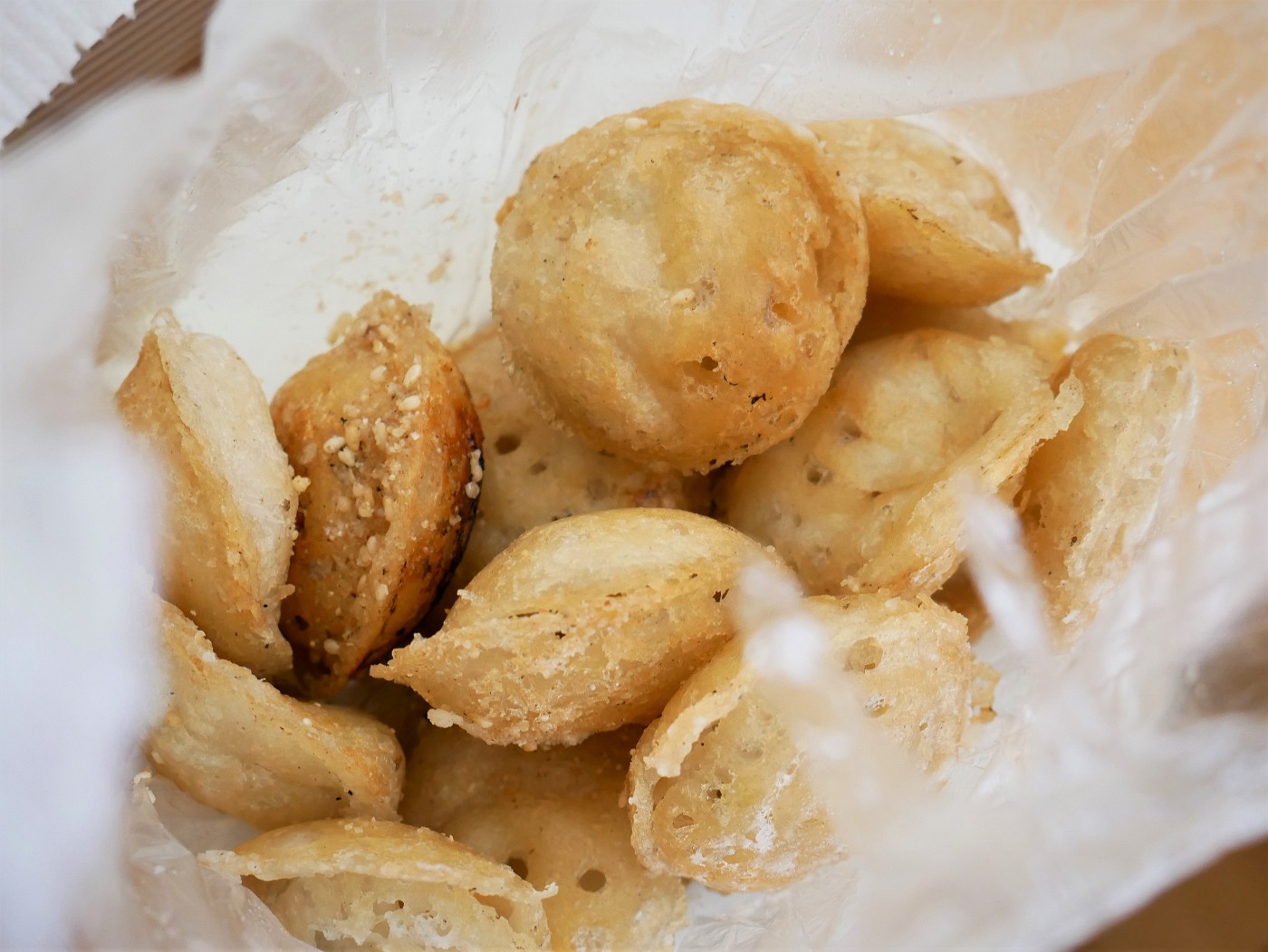
Map of Naypyitaw Motorbike Trip, Prices, and Tips
- Cost to rent a motorbike: €7.30 or 12.000 MMK
- Cost per night at Vegas Hotel: €30 or 50.000 MMK for a ‘superior double room’ including breakfast
- Wear long sleeves and be generous with sunscreen wherever you’re still exposed
- Keep an eye on your petrol; distances are large and gas stations sparse
- Watch where you step at the Uppatasanti Pagoda on hot and sunny days
- Take all maps with a grain of salt
Helpful Post? Consider Buying me a Tamarind Juice!
Thanks for Reading! Here are Some Pins:










